ROOTSTOCK RACING
|
By Brent Freedland Adventure racing is a rollercoaster, and racing with Zoe last weekend at EX2’s 6-hour Venturequest was such a valuable reminder about everything I take for granted about adventure racing as a seasoned, competitive racer. Experiencing the sport through a 9-year-old rookie’s eyes has been incredibly rewarding for Abby and me, it has been humbling, and it has been a master class in highlighting what is important about the sport. On Saturday, things were going better than planned…until the wheels came off…and then rolled down the road…and then off a cliff…and then shattered… And then, Zoe and I worked hard to put them back together again, shifting perspective and coming to peace with how things aren’t always about rainbows and unicorns and standing on the podium box at the end. To be clear, Abby and I have worked very hard NOT to impose our competitive instincts on Zoe when it comes to AR, or anything else. Thing is, she has grown up watching us come home from many races with hardware, and it’s clear she feels some degree of pressure to do well because we do (she shared these sentiments during an interview with Brian Gatens for the Dark Zone Podcast, but she doesn't reflect on why). We’ve focused on the process rather than outcome, wanting to foster her desire to push herself and “race” without worrying about the actual results. But she has done better than a 9-year-old would probably be expected to, and that success clearly is driving her and her goals. Coming off the Buff Betty 6-hour, a podium placement there, and a top ten overall finish, I cautioned her to temper her expectations for Venturequest. There were almost 100 teams and solos lining up, and a similar finish was unlikely. “Let’s just go have fun, work together, and do the best that we can. We’ll do fine if we do those things,” I suggested. Many times. She seemed all in. And so we drove down to Maryland on Friday night, camped, and arose ready to race…Sort of. We were pretty tired… The race began with a short prologue, which we knocked out efficiently enough, though… LESSON 1: Zoe downed some breakfast in the final 30 minutes for race start...or rather, I made her eat more... and her stomach didn’t like running around that hard after she choked down her breakfast. I don't mind eating closer to activity, but I know many do. Don't project your own tendencies on others! After finishing the separator, we set off on the bike, and we elected to bag one of the three optional CPs at the start. We could get the others when we returned if we had time, and we agreed that it would be better to head out to the foot and paddle sections as soon as possible. The bike ride over to the bike drop went well enough, and Zoe absolutely rocked the downhills. I helped push the bikes up some of the uphills, and we made good time, losing ground to teams due to speed but making it up through constant forward progress. We had talked about efficiency as a primary goal for the race, and Zoe really seemed to work hard to work on this crucial AR skill, walking fast to keep up when I pushed the bikes, eating while walking, and riding steady on the flats and downs. LESSON 2: Don’t get frustrated when you can’t do something. Even when fresh and riding well, Zoe would get frustrated when she couldn’t ride all the uphills. As we talked about, getting down doesn’t make anyone move better, and all of us have our relative limits. Whether we are a top team, a weekend warrior, 9 years old or 75, we all have our limits. When we hit them, we just make the best of it and move on. When we arrived at the TA, we dropped our bikes and moved on, agreeing that our 2-3 minute transition was perfect. We had determined we would clear the course until we couldn’t, so we knocked off seven of the twelve CPs on the foot section before heading for the canoes. We did well with nav, moved fast when we could, and had a great time finding the flags. Zoe took the e-punch and learned how to use the dipper (and avoid the dreaded multiple beeps when punching). At one point, I took a line through the woods that didn’t fully pan out, but Zoe remarked on how lovely the woods were. Positive mindset is everything. LESSON 3: Obviously, when you run into walls of thick thorns, life just sucks, but a lot of the time, the woods throw much thinner vegetation at you that pokes and prods. You can try to pick your way through it and spend 5 minutes getting targeted and scratched or you can just put your head down and walk through it in 30 seconds. By the end of our trek, she was definitely getting the hang of that one. We popped into the canoes in good spirits and enjoyed a nice break from biking and running, knocking out the canoe relatively quickly. I had carried a carbon four-piece paddle for Zoe to use, as she has done some kayaking but has no canoe paddle experience. I sterned with the canoe blade, and we cruised around the small lake, bagging all four CPs. We were watching our time by this point, and we felt good about where we stood. Once done, we made relatively quick work of the final trekking points and returned to the bikes with all CPs in hand and two hours to go. And now… now we had a decision to make. There was a 1:30pm cutoff at the bikes, and we made it by 1pm. Looking at the maps, we could either finish the full bike, which would mean five more CPs, or we could go back the way we came at the start of the race. This second route was shorter, but it didn’t look MUCH shorter, there were some big uphills to contend with on the way back, and there were no CPs. It had taken us 45 minutes or so of ride time, on fresh legs, at the start of the race, so it might take us more than that on the way back. True, there were CPs back around the start/finish to bag if we had time, but who knows. We felt OK taking on the rest of the bike with two hours to go, knowing that it was longer (but again, it didn’t look THAT much longer), and we’d be guaranteed to get more CPs that way. So, off we went. LESSON 4: Could have, would have, should have… has no real place in the sport. I mean, yes, we can look back, reflect, and learn. But you make decisions, and then you live with them. In hindsight… as you will see… we SHOULD have headed back the way we came. But we didn’t. It would have been a different outcome in many ways, but we made a decision to go for it, and that’s that. When it comes down to it, both Zoe and I agreed we would have made the same decision again with the information we had (Even Abby, looking over the maps with me after the race agreed it seemed like a fine decision…) So, we headed out. Overall, the first hour went relatively well, though we lost 5 minutes or so on a small nav error as I turned onto an unmapped trail. Sigh… And first two CPs ended up being tougher than they looked. Hardest trails of the race, trickier nav with fainter trails to follow, more obstacles, more terrain. And a bee sting… LESSON 5: When a teammate gets stung, you all need to MOVE. You never know whether it’s a rogue flying hypodermic needle or if it’s the vanguard of a small squadron. Thankfully, I was the one who got stung, and thankfully Zoe’s decision to play 30 seconds of panicked freeze tag did not result in subsequent stings. But when someone yells “Run!” or “Ride!” you go….unless you’re on a VERY steep mountainside in a pile of deadfall in Alaska, but I digress… We emerged out of those first two CPs and still felt ok about time as it seemed like the long route back through 16, 17 and CPB would be on faster flow trail… which it was. We were still moving well, Zoe was in good spirits, and we had well over an hour still. No problem. Off we went. And then… I have written about this before… we hit it. The #$(@&#^ time warp that ALWAYS happens in adventure racing. Doesn’t matter if it’s a 6-hour race, a 24, or an expedition. It’s proportionate to the event, but it always happens (unless you are comfortably clearing a course well ahead of the cutoff). All of a sudden, you look at your watch and a significant chunk of time has impossibly just vanished. Coming out of CP16, we emerged out of the vortex to find ourselves with 40 minutes left…maybe less -- I’m already repressing the next half hour or so -- and we knew we were in trouble. “Zoe, if we really GO, I think we still have a shot,” I said, knowing deep down we probably didn’t. She took a deep breath and we set off. It didn’t take long. There were tears. There was frustration. There were pauses to regroup. We probably lost 15-20 minutes, maybe more, on trailside therapy and half a dozen lessons in parenting. Sometimes, I deserved an award, other times I floundered. I never went full on “hard love” (more on the one moment I almost did soon), but sometimes you just can’t find the right button to push. Thankfully, we were not alone out there, and I think it helped a LITTLE that we were obviously running late with several other teams. Nonetheless, as a team we had some ROUGH moments. BUT those moments were fascinating. Zoe was tired and sore, but she never complained about that. She never once mentioned that the finish felt so far away or that she couldn’t make it. She never wondered HOW she would make it. She was fixated on the fact -- once it was clear that it was indeed scientifically impossible to reach the finish line on time without Dr. Strange’s Time Stone -- that we were going to be late. And that we were going to lose points. And then, at a certain point, it became clear that we would, in fact, lose all of our points. And then, maybe, we would be disqualified altogether from the rankings… She just could not let go of those pre-race hopes and dreams. No matter how many times I begged her to stop thinking about checkpoints, and the fact that we would have to skip the last one we intended to get (17; I did take her into the mill for B right at the end because it was cool -- even if we lost that point too!), and the fact that we were not just late but catastrophically late, and the fact that we couldn’t control what the other teams did or didn’t do… None of it mattered, she just couldn’t shake that disappointment. And then, she fell. Not hard, nothing scary, but she fell off her bike trying to dismount on a hill and got awkwardly wedged under her bike. We were close to the official 3:00pm cutoff (I think, it was a literal blur for a good 30-40 minutes), and we still had a decent amount of trail left. We were about to hit a road, which was marked as out of bounds. I had been trying desperately for a long while to find some creative way to just bail out in a legal fashion to get back, but the tough thing about this final bike ride was that there were no ways out. You were 100% committed. So, as every emotion literally poured out of her on that trail in that moment, considering that no positive coaching, parenting, or love had helped her reset (not to mention games, songs, or whooping and hollering on the bike, as she likes to do), I tried a HINT of tough love. “Well, when we get to the road, let’s just ride it around. It’ll be long, we’ll still get back late, I don’t know what the penalty is for using it since it’s out of bounds, but we’ll be done with the trail.” She screamed, a hint of unbound rage. “NO!!!” “Well, as your father, I’m not LETTING you ride any more of this trail if this is how you're feeling. I’m just not. I’m pulling the plug.” A jumble of words, emotions. A frantic weighing of the options. LESSON 6: It’s always better to finish. Always. After not finishing ITERA Scotland last year, I wrote about how freeing it was to CHOOSE to stop racing, and I stand by that one, as I think it was an important moment for me at least in wrestling with my own relationship with racing, goals, and expectations. But generally speaking, it’s always best to finish… Zoe quickly worked through all of this with me. She was tempted to just say “Screw it” and ride the road. Our race, after all, had turned from a race into something else either way, so what did it matter? But she decided she wanted to get through the course, ride that trail to the end, and “Finish.” So, we did. We settled on riding out the last few minutes to the road, and then we would make a decision. At the road, we found a solo racer. She was similarly rattled by a fall of some sort, and she had run out of water. We had a good moment of commiseration, I gave her a water bottle, and we even tried to have a group hug…Zoe passed and steeled herself for the final stretch of trail, later noting that hugging strangers felt weird… LESSON 7: We are all a family in AR. You don’t have to know someone to KNOW someone, and sometimes we all need a hug. Period… Though, yes, as a general rule of thumb, don’t hug strangers… Whether it was the tough love, our moment of solidarity with the solo racer, or the fact that all of that more or less timed with the 3:00pm cutoff, which brought some finality to the question of whether we'd make it back, Zoe finally settled in and seemed to start to let go of everything else. We rode that last stretch of trail well, popped into the mill and punched CPB -- because, why not? -- and then we hiked our bikes up the steep final stretch of trail, emerging right into the middle of the award ceremony. My guess is Zoe received the biggest and longest round of applause of the day, though to be fair, everyone WAS a captive audience as we rode by up to the finish line arch. Regardless, what a perfect way to end any race! And so, we lost all 22 of our points. Dropping us all the way down toward the very bottom of the 100 team/solo pile. Hindsight? Yeah, had we ridden back the shorter route, we very well may have been on the podium of the mixed division. Hard to say, but it seems likely we would have had time to get some points around the finish line to finish with roughly the same CP count that we had. Might have been enough for third and top quarter or so overall. There’s a lot there to be proud of. But that’s not what we did. LESSON 8: On the car ride home, we spent a good 30 minutes talking about the race and debriefing. Considering that I was expecting her to go back to watching the iPad and napping after 2 minutes, I was amazed that she dove deep into that debrief. By the end, she was noting that the experience we had was better than podiuming... though I think she might have been tired when she chose the word “better.” But she genuinely recognized that she (and we, really) learned WAY more by finishing 30-40 minutes late, losing all of our points, and missing out on the fortune and glory. LESSON 9: This sport is humbling. Failure is part of it, but it’s all about perspective, and it doesn’t have to be viewed as failure. As we discussed in the car, AR is about community, unplugging from the rat race and technology, communing with nature, doing things that virtually no one else does, embarking on large… or small… odysseys with our teammates (often our best friends or loved ones), and overcoming incredible challenges that then empower us to be stronger people who are better able to overcome the challenges of daily life. I don’t know when Zoe will draw on this one, but I’m sure she will, whether at school, with her brother or her friends, at her next race, or on some other adventure. And finally, LESSON 10: Smoothies paired with waffle fries from Chick-Fil-A are a near perfect post-race meal… While we may have flamed out, special shout out to Karyn who was lead navving for the first time and racing solo. Not to mention that she continues to rehab from knee surgery back in the spring. Karyn had a great day, winning the women's solo division and finishing 11th overall out of 97 teams! More importantly, even though we were not racing together, Karyn was a terrific teammate, leaving some trail/race magic for Zoe after the paddle, cheering us on, taking our pictures, and serving as Zoe's biggest cheerleader.
Yesterday, Zoe received a text from Karyn, our teammate who won the solo women’s division. The exchange was brief, neither Abby nor I had any influence over it, and I think it shows that Zoe is definitely building a genuine AR identity. Karyn: How’s Zoe today?! Me (Zoe): This is Zoe. I am doing good. How are you doing? Karyn: Hey Zoe!! Glad to hear! Are your legs tired from all that tough riding? Mine are but my shoulders are more sore from carrying a pack! Me (Zoe): Yes. I am soooo sore, but it is a good <thumbs up emoji> sore. And that not only sums up AR but also puts a ribbon the 2023 race season. We started with a torn calf and ended by losing all our points. In between, we had some amazing experiences, some good performances, and as always, an awful lot of learning. The Little Rootstockers (and, organizationally, Rootstock Racing) will be out of action for a while as we set off on another sort of adventure. Seven months of international travel, world learning, and, I’m sure, a little bit of adventure.
3 Comments
by Brent Freedland Happy BirthdayIt was my birthday last weekend, and I was rewarded on the big day with a fantastic National Championship hosted by USARA and GMARA. I’ve competed in this fast and furious race fourteen times now, dating back to 2007, and this year’s race out of Smugglers Notch is up there with NYARA’s spectacular Catskills course in 2012 and Steph Ross’ 2011 beautiful first edition in Kentucky as my favorite USARA Nationals. From various interactions and discussions after the race, it seemed that I was not the only one holding the race in high regard. More on the actual event in a bit. Finishing the race on my birthday was a fun little twist, and a big thank you to all the racers, volunteers, media personnel, and spectators who wished me a happy day in my sleepy stupor. What a surprise every time someone reminded me what day it was out in the woods on Saturday morning, and I was tickled green (pun intended) to share the stage with my birthday buddies, Steph Ross and Chelsea McBride, for a post-race serenade. Thank you. RewindThis year’s Nationals ended up feeling like a capstone of sorts for me as I have been struggling with my relationship (as a racer) with the sport for a while now. I don’t know any experienced adventure racers who don’t have stories of tormented moments on the course. We love this sport and all the amazing experiences it offers, but it takes a LOT to continue to do it race after race, year after year. I started adventure racing when I was 24 years old, and I’m closing in on 20 years in the sport. According to USARA executive director Michael Garrison’s quick analysis of this year’s Nationals field, I’m still a couple years shy of the average age of the 180 or so amazing athletes who took on the steep mountains and dense wilderness of Vermont this weekend. I’ve competed in well over 100 events, most of them at a relatively competitive level, and for a while now, I’ve really been struggling to figure out what I want out of this sport and whether I want to just focus on race directing instead of competition. It's been a complex struggle that dates back to 2014 or so…yep…a decade…. At that point, Abby and I had been racing with GOALS ARA for quite a while and that chapter was closing. The old guard of our team (amazing mentors such as Bruce Wong, Jonathan Neely, and Tracey Roberston) had stepped back from the sport and then mostly retired (Jon has somehow retired 73 times since 2014…). For a few years, the team was in flux, with teammates coming and going and a lot of guest racers. The synergy we had with our original GOALS team wasn’t quite the same, and it was then that we decided to start Rootstock Racing. Rootstock immediately injected a new energy into our racing, but I still struggled somewhat as I found it hard to prepare the way I wanted to race at the level that we expect to compete. In short, I found myself floundering to balance the frustrations of not being able to put the time in and then struggling at races physically with the rest of life’s requirements: parenting, partnering, working, race directing… I just wasn’t having fun. And then my amazing teammates Brian, Abby, and Jim won USARA Nationals, and it was SO exciting and inspiring to see our team of gritty racers rise to the top. You see, I have long said that Rootstock is all about smoke and mirrors. People think we are much faster than we are, much stronger than we are. In fact, when we are at our best, it’s because we are a team of competent navigators who also have a good eye for strategy. We work well as a team. We make up for a lack of true top-level speed and power with teamwork, and when Abby, Brian, and Jim won that race in PA, it marked the beginning of a 3-4 year stretch during which we rarely lost. We could mix and match our teammates, and it didn’t matter as our team was just locked in and essentially interchangeable. In 2018, after another surprising National Championship (It’s worth acknowledging the reality that the US Nationals race scene has really evolved over the past 5 years, and the competition is so much deeper and elite than it sometimes has been), we were riding high as a team, and we also added two 2nd place finishes at major expedition races: XPD in Tasmania and Untamed New England. A second-place finish at 2019 Nationals in NC to the amazing Quest Adventure Racing team felt pretty good, too. And, yet… Day 1 of Untamed New England, 2018. We were running in second place and feeling good as a team, riding along after a strong opening stage during which we kept an impressive Untamed New England team in sight through most of the leg. We were fit and ready to race…and all I could think of was wanting to drop out of the race. I just wasn’t feeling it, and the feeling was familiar. It had waned a fair bit with the team’s success, but something else was nagging at me. Scroll ahead to 2021. The team was getting ready to compete at 2021 USARA Nationals in Wisconsin. It had been two years really since our peak, but the team had raced well in the couple of races we had participated in coming out of COVID, and many seemed to think we were a logical choice for the podium, some picking us to win. It was a race that played well to our strengths in that there was a lot of navigation and route choice. It was also the deepest field I had ever seen at Nationals at the top (though this year’s race may have eclipsed 2021). There was pressure. And remember, smoke and mirrors. And when the smoke doesn’t work… In short, I started realizing I wasn’t enjoying the pressure of racing anymore. I didn’t want to change anything significant, but I wanted to stop worrying about how we did, and I wanted people to stop talking about our team as they would truly elite teams because we are a bit different…maybe more than a bit different, really…than other teams who have won Nationals. And so, for the past two years, I’ve been working toward resetting. I can’t necessarily speak for the rest of my team, but I don’t think I’m the only one who has been wrestling with some of these questions. We’ve talked about worrying less about how we do, changing the narrative when it comes to goal setting, and not paying as much attention to other teams or what we might learn in TAs. That doesn’t mean we change how we actually want to race in the woods as a unit, but as long as we can look back and feel like we all left it all out there, we made good decisions, executed nav and strategy, etc., that would be more than enough. Fast Forward
We hoped to get in early enough to complete the paddle in the light, and thankfully we did so with ample time to spare. The river was a serpentine waterway full of current and occasional splashes of light whitewater. It was surprisingly scenic, considering it was the most public part of the course, and the river was highlighted with one particular section littered with dramatic boulders and small cliff faces. With the river behind us, the real race began, and things definitely ramped up. The bike ride out of the TA started off well enough, but as darkness enveloped us, we found ourselves traveling with StrongMachine/GMARA along a rugged riverside trail. Bits of it were fast, but large stretches involved steep hike-a-biking, muddy and rooty singletrack, narrow stretches of trails that wound between trees waiting to knock you off your bike, and occasional stretches in which it was easy to lose the trail in the dark if you rode too fast. It was a physical section, and it took a bit of a toll on our collective energy. When we came out the other side, we enjoyed a short stretch of trail navigation through the Smugglers Notch bike trails. Until I bonked briefly, that is, on another stretch of trail that required more hike-a-bike than riding. With CP 24 behind us and my energy rebounding, we forged ahead and climbed out of the resort to the next TA for the first of the two monster treks. We had lost some time to a number of the other full-course contenders on this stage but found ourselves navigating well and making good time through the section, closing the gap on several of the teams. It was a wild section with a massive climb and some rocky reentrants, but we navved it well as a team and finished it up with plenty of time to get through the navigation challenge that waited for us at TA6. Once back on our bikes, we rode up and over the Notch, a rugged, boulder-littered landscape that feels like it belongs in the Misty Mountains, and we bombed down the other side…or rather coasted as some Sleepmonsters started lobbing obstacles at us from the steep Green Mountains on either side. We finally reached the TA to find a party of tired teams, racers, and volunteers in a state of disarray. Teams were largely splitting up to complete the navigation challenge of trying to find nine checkpoints in a maze of trails that was just challenging enough to give many teams a fit or two. We elected to each take a map and go find the three points each map required, hoping that we could all nail the nav and move on quickly. I took the longest route and did well on the first two CPs, but I botched the third point and lost 10-15 minutes in the process. I ran back to TA expecting to find Joel and Abby waiting, but instead found that Abby was not back yet. She, like MANY other racers, really struggled with the third point of her map, and she came back without the CP. Joel then took off to find that final point, and while he did, it took longer than we expected. Back on the bike, post-dawn sleepies continued to slow our progress to the point where we stopped for five minutes just shy of dawn. That helped enough and we settled in to work our way through the final trail system in Sterling Forest. It was slow going, more hike-a-biking at times, and we were aware that we had entered the AR time warp during which time seems to all but vanish. It’s amazing how all of a sudden, one realizes that minutes have somehow multiplied into hours, so after bagging the first two CPs, we stopped to discuss options. We knew we could get the final two CPs, but we wanted to maximize time on the final big trek, so we elected to skip our first CPs of the race and get ourselves back out on foot. While not an easy decision, once we made it, it felt good to just move ahead on the bike knowing that the goal had shifted from the pressure of clearing the course to just maximizing the remaining trek. At 9AM, we started back up into the mountains. At the TA, we learned that it had taken Bend almost four hours to make it up to the two mandatory CPs that roughly divided the trek into halves. We had six hours left. Determined to make a final push, we set off, taking care of some water and other needs along the way up to the first CP where we converged with Rib, Dark Horse, and another team or two on a beautiful beaver pond nestled in the mountains. It was obvious that everyone was weighing what to do with the final hours of the race, and the TA staff had been directing people to be careful, nudging the less experienced teams (and, we would later learn, some of the more experienced ones, too) to really be careful with their time. I think everyone was a bit nervous about blowing it. After that first point, we took off and quickly found ourselves alone. We had decided on a route that would drop the three highest, most remote, and hardest points on the trek. We watched our clock, but the goal was to clear everything else on the first half of the trek and then move point by point through the final four CPs. With no pressure except the clock, we methodically worked together to spike point after point. I led us through the terrain and manned the compass, navigating an efficient route that would minimize elevation change, Abby kept a firm eye on the altimeter, and Joel focused on pace counting. We made steady work of it and found ourselves completing the first half of the trek somewhere around three hours. We also started crossing paths with a number of other teams, which was the story of the race. We smiled, we laughed, we talked, and then we would take off for our next point. As we dropped off the ridge and high spurs of the Green Mountains toward the final four points, we still had time to complete our goal, and at the first of the final four points (spaced out in a near linear line along a sidehill), we crossed paths with team VERT, who had been racing in podium contention for the first stages of the race. We assumed they either were still clearing the course or had dropped one or two, having started the trek well before we did. When we learned they had dropped five points, it was a jolt and a reminder that you never know what is happening ahead (or behind) you in AR. If VERT had dropped five, who knew what the other ten or so teams likely behind the few teams clearing the course were doing? We weren’t focused on VERT, specifically, but seeing them gave us a boost, and we took off, sticking to our one point at a time philosophy, but more determined to move with a bit more urgency to sweep those last points. Half an hour or so later, we had accomplished that goal and were on our way to the finish five hours or so after starting. It was a satisfying feeling to have nailed the trek as well as we had, only dropping the three points after leaving those final two bike points. In hindsight, we probably could have grabbed at least one of those two, but we’ve pushed things to the cutoff enough times to simply savor the luxury of running down the mountain to a busy, cheering finish line without having to risk a coronary. Ultimately, we finished in 8th place (amazingly, 3 teams…Tower, VERT, and our team…all dropped five points and finished within about ten minutes of each other), but more importantly for me, it was the first longer race in years that I simply felt focused AND relaxed. We just had a blast. Whatever lows we had were nutritional or from fatigue, rather than being from minor mistakes or from the stress of racing against other teams. I hadn’t had this much fun in this sort of race in a long, long time, and it was a joy not to be stuck in my head, processing some existential crisis, real or conceived.
I’m sure I will have lows again. I’m sure I will question my life choices and wonder if “42” REALLY is the meaning of life or not, but after several years of working to find the joy in racing again, I feel like I did this season. The Faroe Islands and Nationals, in particular, have reminded me of just how special this sport can be. Of course, while I have worked on my mindset myself, I must give credit to my amazing teammates as well who make it all that much more enjoyable. As always: thank you to the race directors. USARA and GMARA put together a fantastic course, and it will serve as a highlight for years to come. Congratulations to the amazing podium teams, Bend Racing, Grit, and Wedali, the only three teams to clear the course. And a special shout out to our teammates, Nicki and Paul, who raced with guest racer Travis Siendhel. I know it wasn’t the smoothest race for them, but they do what Rootstock does: persevering, making the best of it, and working their way to the finish line regardless. What’s next? Pure AR joy as I get to race with Zoe at VentureQuest, her second adventure race of the year, as Little Rootstockers. For the rest of the team, we’ll be watching and rooting for Bend Racing and all the other American teams at Worlds. And I’ll be remembering this birthday for a while. by Abby Perkiss For the past three years, I’ve found myself in a loop of expedition racing self-doubt. Each event I’ve done, I get in my head before I even hit the start line, questioning not just my ability to complete the race but my desire to put myself in that place. I find myself anticipating the inevitable exhaustion and discomfort. I feel overwhelmed by the idea of focused movement for days on end, defeated by the battle of wills before the need for will even kicks in. Such was the case as we prepared for the 2023 Nordic Island Adventure Race in the Faroe Islands. We had signed up for the event more than a year ago; as soon as Brent saw the first announcement, he started conspiring to get to the start line. I found the teaser video to be equal parts intimidating and awe-inspiring: the technicality, the vastness, the weather. After Scotland in 2022, when Mark Lattanzi and I spent Day 2 writing a joint retirement statement, I began to think about finding a fill-in to round out our Faroe roster. But when my family surprised us by committing to watching the kids again, and then Mark doubled down on racing, I put my concerns aside and pledged to make it to the start. If this was my last expedition race, I knew that it would be a helluva goodbye. One more for the road.
Still, as we packed our gear, coordinated childcare, and sorted out travel logistics, I began to wonder whether we’d ever actually get out the door. First, Mark had a family emergency that almost precluded him from traveling. Then, the many viruses circulating through Philly this summer seemed to be closing in, and I was certain that one of our kids would get sick and we’d have to withdraw. When we finally made it onto the plane, I kept waiting for the text asking one of us to fly home. After we arrived, our transition to race mode was mired by gear hiccups. First, one of our duffels got stuck in Copenhagen. We helplessly watched the AirTag, anchored in Terminal Three, as the airline kept telling us they were trying to locate it, and we wondered if we would see our packraft, PFDs, drysuits, and other assorted mandatory gear before the start. As we worked to source replacements from the teams we knew at the race, we joked that we would get to enjoy a six-day tour of Faroese pubs. Despite a certain appeal to that scenario, I couldn’t justify the familial resources not to line up at the start. Finally, on Saturday morning, 24 hours before the race began, Brent and I borrowed a car and drove to the airport to claim our bag. Meanwhile, as we were riding down a sharp hill on a meander through town, I heard a loud pop and discovered that I had blown a spoke in my front wheel. We rode gingerly to a local bike shop, the wheel wobbling all the way, to learn that no one in Denmark carries Mavic parts. After fifteen minutes of frantic calls, the shop owner’s wife agreed to lend me her front wheel for the week. By some constellation and luck and grit, we were ready to race. We had very little information about the course logistics; we would have to wait until Sunday at 6am to start our deep planning. So, Saturday night, we all went to bed early in preparation for the 4:30am wakeup – and proceeded to toss and turn into the early hours of the morning. It turned out that many of our North American friends had suffered a similarly restless pre-race night – a combination, no doubt, of jetlag and nerves at the unknown journey before us. The race began promptly at 9am with a fast and fun orienteering course around Torshavn. Brent’s navigation was dialed and the points passed quickly; at some point, as we found ourselves racing ahead of Estonia, he joked that he should retire then and there. At the end of the prologue, we transitioned onto bike for the start of Stage 1, an 80km ride that would take us from the capitol east across the island of Vagar. The ride included almost 10,000 feet of climbing, made possible by the rugged trails we traversed up and over two mountain passes. The ride was spectacular. We transitioned from road to trail to overland hike-a-bike and then repeated the cycle two additional times. The sun was uncharacteristically bright, offering us our first views of the jutting peaks of the Faroes. It was a true journey of a stage – one of the most varied bike legs I can remember in an expedition race. It also took us through our first of several tunnels that we would encounter throughout the week – extended stretches of travel under the ocean and through mountains to get us across the island chain. There was novelty in that first tunnel, which would gradually be replaced by a sort of sensory-overloaded terror as the fumes, jet propulsion exhaust fans, and heavy traffic weighed on our mounting fatigue.
As we pulled into TA and transitioned to Stage 2 – an 87km trek with an 8km paddle in the middle that was projected to take 24-36 hours – I said to Brent, this is the best I’ve ever felt on Day 1 of an expedition race, physically and mentally. Maybe the tides have turned… Of course, as the Dark Zone’s Brian Gatens so often reminds us, no matter how you’re feeling in adventure racing, it’ll soon change. The first twelve hours of Stage 2 passed quickly, as we negotiated the steep pitches, deep canyons, and water-logged plateaus of the long trek. Brent’s navigation continued to shine, even as the nightly fog rolled in, and he expertly led us from point to point. Fence. Summit. Lake. Cairn. Sometime in the early morning hours, we hit CP42, the Lighthouse. What a strange optical illusion to have its metronomic flash appear below us, as we traveled along a sloping spur above the ocean. We had set this as our decision point – we could either ascend up, along, and over a steep ridge down to the waypoint, or we could cover less distance and less elevation by coasteering the shoreline to our paddle gear. The latter would be physically kinder, but it wasn’t without risks; it would require us to traverse several mapped canyons and a short unmapped band, right at the headland. We opted to take the risk. Reading the land well, and capitalizing on a little bit of luck, we made our way through the canyons with relative ease. All that was left was the unmapped headland. We were all tired by this point, a combination no doubt of the soporific fog and the lack of sleep the night before, so when we found a protected flat spot between two reentrants, we took advantage of it to set up our tent and enjoy a rare Night 1 sleep. Just ninety minutes, but it was enough to take the edge off and clear our heads – which turned out to be exactly what we needed for the next stretch. We packed up and continued on, through the final canyon and around the point of land to the southeast. We picked our way carefully along the high-consequence cliffs – it was technical, but it generally felt manageable, even to my low-tolerance comfort. Then gradually, it became a little bit less comfortable. And a little bit less manageable. By the time we realized that we had reached an impasse, I was calculating and recalculating risk. At what point does it become too much? Had we gotten there yet?
It was one thing for me to have a hard time; it was entirely different for my nimble rock-hopping husband to lose his confidence. Too much – we had hit that point. Over about 45 seconds, I went through all the possible scenarios that would get us off this exposed cliff face – the best I could muster was a roped rescue, and the worst was, well, unrepeatable… Eventually, Brent found the line through to the other side of the scramble, and with several deep breaths, I was able to follow his footsteps. We traveled to a higher elevation and continued to the waypoint without issue, but by the time we dropped to the road and our paddle gear, I was totally spent. Of course, this is adventure racing, and what choice do you have but to keep moving with the recognition that this, too, will pass? As we inflated our MRS Barracuda Pros and set up our sprayskirts (such a game changer in the frigid North Atlantic waters), I looked out onto what we were told were the most dangerous currents in Faroe Islands, bracing for what was to come. Ultimately, the crossing was completely benign, whether because the tides and winds were in our favor or because the ocean was less susceptible to RD hyperbole. We scanned for whales, saw our first puffin, hit the sea cave checkpoint, and made our way to the second waypoint to drop off our gear and continue onto the second half of the stage. *** I recently listened to a trail running podcast, and the guest – a top-level competitor – noted that every time she runs an ultra, she spends the first ten kilometers questioning her decision to race. This was a terrible idea. I’d rather be doing anything but running up this hill. Why am I out here? Then she settles in and enjoys the ride – the inevitable peaks and valleys that take her to the finish. It was in this proverbial first 10km that I found myself for the next 24 hours – in adventure racing, what I now call “The Long Day 2.” Our trek continued up and over a series of exposed ridges, and as my nerves continued to fray, I was utterly overwhelmed. Will every checkpoint be this high consequence? There’s no way I can keep doing this for five more days. Why am I here? Why am I asking so much of people to allow for me to take part if I’m not having fun? And how am I ever going to get to the finish line?
We awoke more than 24 hours into the stage, still with two more checkpoints to push through – one mandatory and one pro (an optional point that keeps you on the full course – in this race, once you skip one pro point, you’re no longer permitted to visit any additional pros, so diverging from the full course has the potential for substantial implications for the standings). I was fine physically, but still not quite reset mentally. It’s a hard feeling to put into words. I was totally willing to keep pushing, but I had absolutely no desire, no drive, to do so. In that moment, I would have been completely fine to end our race and head for the nearest hotel. So, when we reached CP 49 (mandatory) and had to decide whether to commit to CP 51 (pro) and the full course or take the conservative route down to the TA and preserve our cushion to make the upcoming time cutoff, I made myself completely absent from the conversation. Willing, but not driven. Who are you writing letters to? Brent asked as we headed to the TA, familiar with my AR brain. What are you telling them? Until that point, my efforts to stay inside myself had held, but his question cracked me open. I sobbed on the side of the trail. Why am I here? Why are we doing this? How am I ever going to make it to the finish? And why did you have to ask that damned question? You’re too hard on yourself, he told me. You can do this if you want to do it. No one is judging you or questioning you. You just need to get out of your own way. The pros and cons of racing with your partner… In truth, it was exactly the release I needed. As we descended the last hill, crying gave way to breathing, and breathing gave way to a sense of calm – finally. This probably won’t be the last time I cry this week, I told Andy. That’s okay, he winked. I’ve already cried five times in my head. What a gift this team was. From there, the race entered its flow state.
The end of the paddle was noteworthy for its battering headwind and, at TA3, our introduction to the wonder that is the Faroese hot dog baguette – a grilled footlong hot dog nestled inside a warmed and hollowed out baguette, and filled with the sauce of your choosing (spicy mustard FTW). In the warmth of the Effo gas station, we refueled and gathered ourselves for the short ride to Stage 5, which included a cliff jump and dive for two underwater CPs, and then the challenge of navigating through three peaks, including the tallest mountain in the islands, on a wooden relief map (it was a beautiful piece of art – each team got one to take home as a memento). We had some sleepmonsters to contend with on this ride, but stuck to our strategy of getting through the water CPs and then crashing until daylight. After a few minutes of wandering through the quaint town of Gjogv, Andy and Mark set up the tent, and Brent and I slid into a shallow cement cavern with our ground pads and sleeping bags – what we discovered in the morning was a mercifully-unused septic tank – for a few restless hours off our feet.
When we arrived at the TA, we found that Stage 7, the packraft/trek, had been shortened due to deteriorating conditions in the mountains, and that Stage 11 had been canceled altogether. The two cutoffs on the course had been pushed as a result, so our decision to skip CP 51 was for naught, and we were now entirely on our own course. Every other team had either gotten 51; skipped the first pro point (47), putting them on the short course earlier; dropped mandatory points; or lost a team member. For the next 48 hours, it would just be us against the course as we made our way to the finish. For as daunting as this stage was in anticipation, it ended up being among our favorites of the race. It was wild and rugged, remote and expansive. It included five transitions, from sea to land and back again, and required us to go up and over three towering ridges with some seriously technical terrain to navigate through. In the boats, we paddled past endless salmon fisheries, watching the schools of fish leap into the air, a well-practiced dance. We saw puffins skim along the water, flapping their pointed wings ferociously against the wind, and we watched seals pop up playfully, urging us to follow them. In the mountains, we trudged up steep pitches of rock and grass as the tops gradually came into focus. We traversed windswept ridges, finding checkpoints just as darkness descended and fog rolled in. We hopped boulders, slid down scree, and picked lines through heather-covered cliffs. It required deep focus and a commitment to staying in the present, not forecasting ahead to the horizon. We all did it together. On our descent from the first peak, we found ourselves edging along cliffs that, like that headland on the morning of Day 2, gradually became impossibly steep. Deep into Night 4, we had no choice but to stop on the bit of level ground we could find and climb into our tent until sunrise. At first light, we sidehilled left and were able to pick our way down to the coast, where we came across East Wind. They told us that they had overshot the CP and were climbing back up to reattack. I teared up after hearing about their plan, inspired by their dogmatic pursuit of an official finish. We gave them a few tips from our trip down, and then took note of a big red blot on their map.
I feel validated in how technical that descent seemed, I joked with the guys as we got back on the water. As we came to the final crossing of the stage, we started to plan for the last stretch of the race. Our few hours in the septic tank were only marginally better than our pre-dawn dozing on the cliff’s edge, and we were all getting a little bit stupid-tired as we completed the final kilometers into the TA. When we arrived, Mark ran off to order food, and Andy, Brent, and I found consensus around a brief hotel stay in town before setting off for stages 8-9-10-12 (essentially one long bike with a short embedded trek). The timing wasn’t ideal – we’d be sleeping through the final hours of daylight and then biking and trekking through the night – but it was guaranteed to be warm and dry, and especially after Olof, Whitney, and Erik extolled the virtues of their long hotel sleep the previous night, we were sold. We transitioned quickly, ate the most delicious burgers, and then rode up the hill to the one hotel in town, where we booked two rooms (at a generously discounted rate, when we told them we’d be out by midnight) and slept luxuriously for a few hours, interrupted briefly by the arrival of Strong Machine – great minds!
There, as he laid down for a brief nap, Brent requested a smorgasbord of hot dogs, gummies, Skyr, and coke to be waiting when he woke up. Several minutes later, woken by his bike crashing onto his head, he came into the gas station to find Mark, Andy, and me all in various stages of unconsciousness. He went back out for the camera to document the carnage before rousing us. At that point, there were 60km of roads between us and the finish line, and if we were going to get there before dinner, we knew we had to regroup. That, combined with a punishing headwind – at one point we were pedaling downhill at 8km per hour – gave us the nudge we needed; we spent the last few hours in a paceline, swapping pulls every half kilometer. Aside from a few bus stop shelters to flip maps, and one brief pause when Mark and Andy decided to help a farmer load hay bales into his truck, we maintained our rhythm all the way into Torshavn, navigating the final kilometers into Faroe’s biggest city as residents offered cheers, thumbs up, and horn honks of encouragement. It seemed the whole country had followed the race that week. We turned onto the road for the finish and were greeted by pounding dance music and a couple dozen friends and race personnel, cheering us over the line. As we crossed, my eyes brimmed over with a few more tears – this time, of gratitude and wonderment.
Day Two is the worst. Every single time. I just have to remind myself that if I can push through that, I’ll find what I need on the other side.
That’s why I do it. Because getting to the finish opens me up to possibilities. There are great things along the way, but really, it’s what I gain at the end that keeps me coming back. It’s hard to feel okay taking the time away from family, to ask for so much when you know you’re going to be suffering through a lot of it. I’m so grateful for the support they give me to pursue these silly things. My belief is that your kids and my kids will be enriched in their own lives as they pattern some of this wild dream chasing and balanced thoughtfulness of their parents. A life philosophy of "moderation in all things, including moderation" leaves room for experiences like this once in a while. I’m retiring! After the next one… Five years ago, I knew exactly what I was getting myself into when I stepped onto a start line, and I had the resources to pull myself through it to the finish. Since then, so many things have happened to chip away at those reserves. In the Faroe Islands, I found why again, and I reclaimed a bit of myself again, too. It may sound silly, hyperbolic even, but in the context of our sport – and probably a little bit in life, too – there are few things that will test you more than the depths of the Long Day 2, and few things more affirming than finding your way back out. by Paul Miller Ten days before the 2023 Maine Summer Adventure Race, I knelt down on a board with a nail in it while working around the house. Why is it that the worst injuries are rarely AR related?! When I stood up the board came, too. I pulled it away, and the nail came cleanly out. So did a jet of blood. Then the pain. So. Much. Pain. I knew this may jeopardize the rest of the season so I went into RICE mode. I reached out to the Rootstock squad a few days later with an update and received 100% support. My knee got better every day, and I had two doctors give me the green light to race. So I packed my bags and made my way to Maine. The night before the race, Nicki, Brent, Abby, and I - along with Heather and four-year-old Simon - gathered at Flight Deck Brewing to talk about our goals for the race. Our discussion centered on staying true to what we love about racing as a team: racing the course, pushing hard, and having fun along the way. We set the following intentions:
We discussed the mystery of the course, ways to leverage our individual and team strengths, and how we valued the time together more than the outcome. We ended the night setting up camp in a downpour. The next morning Heather needed to report at 5:50 AM for her volunteer role. The early start made the pre-race bits feel relatively restful.
The race began with a short prologue, in the form of a “navigational quiz,” pulled (with permission) from Mark Lattanzi’s Squiggly Lines. Here, teams had to answer two written questions on interpreting topography. Even with our four minds combined, we got stuck in a vicious loop: we would count the contour lines and run to a volunteer to have our answers checked; they would say “nope” and hand back the page; and we would start the process over. We were in good company when we decided to pull the plug halfway through; it seemed like half of the teams lined up their bikes with us and waited out the fifteen-minute time limit Kate and Cliff had assigned to the prologue.
Early in the stage Brent saw the opportunity for some creative routing. He proposed using an adjacent road to move more quickly and pick off the CPs in the woods in a line on the way back. He passed this idea by the rest of the team as we were getting the early CPs and we all agreed. The decision seemed to pay off; when we returned to our bikes, it looked like we were among the first to leave on the next stage. Back onto our bikes and into a paceline - this stage took us through downtown Bath by the shipyards and along a nice bike trail that paralleled the water course we would be paddling on the next stage. We realized on this ride that the course was moving very quickly. We covered the first three legs faster than we anticipated, banking about two hours on our conservative course estimates. In our pre-race planning, we had decided that we would skip the two farthest-out paddle points, saving roughly 10k of kayaking and 1.5-2 hours of racing. We thought that the course looked to be too big and that at any other spot, we would end up dropping a bigger cluster of points. It was a gamble, leaving points that early - our strategy depended on other teams needing to drop CPs later in the race. As we transitioned to the paddle, we checked our math a second - and third - time, mentally computing rough distance and time estimates. Based on the maps we had, we held to our original plan and set off to clear all but two of the paddle points. We ran into soloist Tom Martin at our first punch - he was getting ready to head for the two farthest out points - and crossed paths with Rib, Untamed, and Strong Machine in the cluster of points in the Androscoggin River. We had no idea what the other teams were planning, so we just focused on our own race and enjoyed the time on the water. It was a beautiful day, and the kayak was just plain fun. We were moving well, taking turns punching CPs, and learning that Abby is quite the sea kayaker, cruising through the confused tidal currents in a solo boat!
We then headed onto the beach and enjoyed a sandy run, which felt like something out of a much longer expedition race.
We arrived at the entrance to the sand bridge to CP 31 at 6pm. We had discussed this section on the previous bike leg, recognizing that there was a tidal window where we were allowed to cross to the checkpoint. We told ourselves on the ride that we would wait up to fifteen minutes; beyond that, we’d leave the point behind and continue on our way – still feeling good about the course being too big. The rules of travel said that you could cross to the checkpoint when the full sand bridge was exposed at low tide - around 7pm. The rules seemed clear, but with four academics on the team, we each found a different way to interpret them, and as we watched two-year-olds pad across the bridge during our beach run, we started to think we might be able to cross early. Fortunately, the race directors anticipated our mental gymnastics and had volunteers run to us to let us know the sand bridge wasn’t open yet. Normally Rootstock takes any chance we get to swim, and we felt like these rules were written just for us at that moment. It was a challenge to stand still and watch little kids playing on the connecting sand after racing hard for seven hours, but due to permitting, we understood that we were not allowed to cross. As we waited out our fifteen minutes, Kate arrived to assess the status of the tide, and shortly after she released us (galloping) across the sand to get the CP. This was a really special stage - one of the highlights of this course. Between the four of us, we’ve competed in every edition of the Maine Summer Adventure Race, and it was one of the most unique spots we’ve gotten to visit. Our thanks to Kate and Cliff for doing the work to get us there. We got back on our bikes to head off for four CPs en route to the big overnight trek. We were feeling really good about our pace and our race, our bodies and our bikes. Our team synergy was working. In order to avoid an out-of-bounds road between TA3 and CP39, we had two choices: a long road ride-around or a 2+ km trail section, of unknown quality. We elected to do the trails, saving significant distance. This section required us to dig really deep. The trails were heavily overgrown, and hard to follow at times. We needed to lift and carry our bikes and physically shift into a higher gear in order to get through. We came out just over an hour later, back onto the road, and discovered two bike mechanical issues. We were able to deal with one of the issues immediately, and thanks to Matt Hayes, we fixed the second when we arrived at the next TA. During the hike-a-bike, I also realized that my gut was beginning to turn. Without missing a beat, Nicki grabbed my pack to give me a chance to recover. Despite the energy dip, our spirits remained high. Back on our bikes to CP39, we all laughed - the AR Gods had smiled on us; the course had definitely slowed down! At this point, we were feeling great about our strategic choice to drop the two paddle points. We climbed up to CP41 and saw an incredible sunset. And then made our way to CP40 for the oyster shucking challenge - as a team, we had to shuck and eat one oyster or face a ten-minute penalty. No one on our team had ever shucked an oyster and because I can learn anything by watching YouTube… the team trusted me to apply my non-existent practical knowledge, under race pressure, while feeling sick, to not put a knife through my hand while doing the deed. With a little coaxing the oyster popped open and Nicki did the hard work of eating it. As I was working on the oyster, the rest of the team was chatting with Kate, who was waiting for us at the point. She shared with us that there had been an error on the maps - the out-of-bounds road was meant for the next section - the overnight trek, not the bike to it - and all of the other teams would be able to ride through without having to deal with the physical hike-a-bike or the long ride-around. It took us a little while to appreciate the full implications of the issue, but we knew immediately that our race had changed. It was a hard moment, and it lingered. We made our way up to TA4 by way of CP42, workshopping how to keep our focus on each other and the race. It was clear that our team needed to continue to focus on what we could control, but we were all having a hard time staying positive, knowing that our race strategy no longer made sense if the other teams had gained an hour on the course by bypassing the mapped out-of-bounds road. We pulled into TA4 at dusk and made the transition to the long foot-O. We estimated the sixteen points would take us about 7-8 hours. We loaded up on fuel and headed into the night. Our heads were still not in race mode and we exited TA4 too far east and were immediately off trail. We practiced trusting our navigators who were remarking that the CP clue of “radio tower” and the topography of the plotted CP weren’t what you would expect. It was on a side hill, as opposed to the top of a ridge or high point. I was thinking about how, as a kid, my neighbor put up a radio tower and I had the chance to sit on the big red blinking light before it was installed. I commented that if we could see the light, we could just head to that. It took longer than we would have liked, but we eventually saw it and it guided us right to the CP. The next 7.5 hours included very subtle terrain of swamps, small ridges, and cliff bands. While I had done everything that I needed to do, and continued to eat, my gut continued to turn on me. All I could do was follow in the footsteps of the teammate in front of me. After focusing on my teammates' feet I came to a conclusion: watching someone walk in the woods reveals a bit of their personality. Orange shoes: couldn’t focus on the feet as there were too many map observations, navigation point conversations…a bit overwhelming. Red/Black shoes: very direct, goes through anything - a “let’s get this done” mentality. White/Grey shoes: every step with purpose, confident foot placements, no wasted energy. As I descended into a pit of misery, Brent and Nicki’s nav re-focused and we continued to move efficiently. I found myself thinking that I wouldn't be able to handle hunting for a lost CP, and I’m grateful for their work that kept us on track and moving in the right direction. At 2:15am, I asked for a moment from my team, went off into the bushes, and puked. Brent called out, “Is this a puke and rally? Or a puke and wither?” I responded: “Puke and rally.” I walked back to the team and said “Let’s go.” Knowing it would be awful, I reached into my bag, pulled out a fig bar, and worked it down. I’m sure magical things happened in the next few hours, and the team tells stories of a moose/bear wrestling match, certainty that we were in the movie Predator, bullfrogs, and a rowdy family of barred owls, but all of this was a blur. I was solely focused on hanging onto my team. We continued to support each other, making sleepy conversation, checking in on the pace. At this time of night it’s very easy to slow down and not realize you’re slowing down. Brent turned to the team and asked “are we still racing? Or are we simply trying to get back?” I knew the question was for me, so of course the answer was: we’re racing. The challenge of racing between 3 and 4am is fighting the sleep monsters. The task of pace counting was lulling Abby to sleep, so my job became to engage Abby without distracting Abby. As we came out to the road that would take us back to the TA, we shuffled as much as possible, and did our best not to wander into oncoming traffic. Getting into the TA helped us wake up, but not enough to remember the new passport. After descending a kilometer downhill on our bikes, we went through our post-TA ritual of “who has this, who has that” and promptly turned around after realizing we had left the passport in the paddle bag. The final bike included eleven CPs. After spiking all the overnight points, the only one on this leg that really tripped us up was CP60. In true AR spirit, another team that had already found it offered some beta, which allowed us to find our way to it. We crossed paths with Rib, caught up, and shared a bit about each other’s races. As the sun came up, the final CPs flew by, and after 23 hours of racing we crossed the finish line. The Maine Summer AR 2023 for the Rootstock squad was all about our teamwork. Since the conclusion of the race we have continued to check in, provide support, and deepen the care that our squad is all about. Wow! No race reports since 2021!
Well, 2023 hasn't started off according to plan, so maybe it's a good year to start recording the ups and downs of the race team once more after another terrific Adventure Addicts race down near Appomattox, Virginia. If you aren't doing Michelle and Liz's races, you are missing out on some of the most enjoyable races out there. They are well designed and directed, and they offer some of the best route choice, strategy and navigation. We may be biased as such events play to our strengths, but we also love Michelle and Liz as fellow RDs because they design creative events that really offer something for everyone, regardless of level. This year's Chill Adventure Race was no different! OK, let's get the best part of the race out there first: our new teammate Paul Miller is terrific! We already knew this, and Paul has raced several times with the team over the last 12-15 months, but he was eager to get to work during the off-season, and his commitment to preparation and racing hard paid off. More importantly, he is just a great person and teammate, and it's always wonderful when you find a new friend who fits in with the team dynamic and culture as seamlessly as Paul does. So, regardless of everything else, the weekend was a win! Now, the...downright awful...Abby tore her calf LITERALLY 200 meters or so into the race. We left the start line on foot on a short trail run into the woods. We had to leap a small stream, and upon pushing off, something popped. And that was that. It didn't take long for us to determine that this wasn't a twisted ankle that would calm down with a few minutes of deep breathing and gentle walking, and Paul and I carried her and helped her hop back to the start. Obviously not the way you want to start a race, but more importantly, not the way you want to start a season. With a handful of races, an ultra, an expedition race in the amazing Faroe Islands, and more on the horizon for 2023, we are just crossing our fingers the news isn't absolutely terrible. (and word just in, it sounds like she avoided a season-ending injury. It's torn, but she should be able to bounce back within a month or so. PHEW!!) The silver lining, for me and Paul, was that the injury happened at such a time that we were able to essentially just restart the race. Since we were within earshot of the start line and hadn't made it to any CPs, we were permitted to shift into the two person all-male category. Racing officially wasn't the most important thing, but it was nice of Michelle and Liz to recognize and allow this. We lost 15 minutes of race time, but we were able to then go out and race our race. This year's course was essentially broken into two segments: a foot and bike loop from the start. There were also nine "wildcard" CPs that could be attacked anytime, anyhow. We laid out a foot loop that would incorporate two of these wildcard points, and we planned to tackle the rest from bike. After a fair bit of debate, we decided to run first as we didn't want to get stuck out on that foot section if time ran out...and because it was VERY cold, which just didn't sound all that fun on the bike to start. Once we were off for real, we made steady work of the foot loop, and we slowly roped in some teams, though it was difficult to really tell what anyone was doing since there were so many different route options and strategies. We stayed positive and focused, and despite sub freezing temperatures, we weren't bothered by the cold. Roughly halfway through, we caught up to Bash Brothers who we knew were one of the favorite teams to win overall, and we crossed paths with TanZ, another team we expected to be dueling it out for the top spot (though, I don't think they saw us). As it turned out, TanZ was looping in the opposite direction, while we ultimately ended up leap frogging with Bash Brothers for the rest of the stage. As we wrapped up the trek, we felt great. We had an efficient stage, we had made up the lost time it seemed, and we also benefitted from TanZ having skipped a CP by accident. They lost some time running back for it, which gave us a much needed cushion considering our own lost time. With six hours or so to go, we felt confident in our ability to clear the bike stage, but unfortunately, we were not able to move the way we wanted to through the stage thanks to yours truly and a few factors that slowed our progress.
In the face of these issues, we just moved steadily and, we felt, efficiently. Our nav was sharp all day, and we had a blast cruising around the bike course. Halfway through, we still felt confident that we would sweep the bike course. We had been inching up on Bash Brothers for the first hour of the stage, catching up to them at bike drops for CPs, but our paths finally diverged and we largely rode on our own for a couple of hours. The highlight of the ride was our bikewhack from CP 16 to 17. We actually were able to more or less ride our bikes off trail, pedaling...albeit slowly...for 90% or so of the whack. We saved several miles of road riding, and the journey was a beautiful one. Not long after that, we saw TanZ for the first time in several hours just as we headed in to drop our bikes and take care of a loop of four wild cards (A-D). And here we entered a time vortex. We nabbed the points without any real issues, but I think we went through our one real lull, feeling some fatigue. The loop took a bit longer than we expected, and once out of it, we found that time had melted away. As we left, TanZ was getting started, and we had also seen Bash Brothers' bikes, so we knew things might be tight. That said, it seemed clear that we all had done different things, and we had no idea where things stood. We set off for the final 90+ minutes of riding, and when the clock ticked down to 60 minutes, I really started analyzing time estimates as it was increasingly clear that it was going to be close. Also knowing that tired legs and an inefficient bike would make it hard to maximize speed and really be able to turn it on, it became evident that we were likely going to have to drop one of the finals CPs, an out and back for CP6. This is often one of the roles Abby take on: timekeeper. She checks the team on big picture decisions if time is tight. As the minutes slipped by and we conducted periodic time checks, her voice became louder and louder that there just wasn't time for fortune and glory. Disappointed to drop it, but knowing it was the right thing to do, we rode in to the finish having cleared all but one CP. Knowing we lost 15 minutes to start and probably another 15-30 minutes from what was essentially a six hour mechanical, we were at peace with that. And we only had six minutes to spare, so it was a wise decision for us. As it turned out, both TanZ and Bash Brothers did clear the course, but they both came back several minutes late meaning we secured the overall win after penalties were factored in. It was a bittersweet win knowing Abby was hurt, and it was frustrating not to be able to ride efficiently on the bike, but it was fantastic to build more rapport with Paul. We worked well together, and even without a second set of maps, he contributed in meaningful ways to the navigation, catching a couple of issues and putting in the extra work to punch most of the CPs. Our route, as it turned out, seemed to be dialed in. I think bits may have required some slower travel, but it seems we traveled 5-6 miles less than Bash Brothers, and 18 miles or so fewer than TanZ. We knew those two teams were likely to be faster than us anyway, but considering our limitations on the bike stage, this ultimately made the difference. And Abby's voice, telling us to skip that last CP! Huge thanks to all the volunteers working with Liz and Michelle to make it happen, and as always, it was so great to see so many friends, old and new, playing in the woods. Special shout out to our teammate Joel Ford who raced with team TBD and took third place in the mixed gender division. Here's to a great 2023! The Rootstock team rounded out its 2021 season this past weekend, when Jim, Karyn, and I (Abby) traveled to northeastern Vermont for the GMARA Hard Fall. It's a gorgeous part of the country and an outdoor playground that deserves a fantastic race. This was the first 24-hour race hosted by GMARA, and as far as I know the first bigger race RD Tom Martin has directed. Though there were some wrinkles to work out, the organization was wonderful, the bones of the course were awesome, and Tom has a great eye for creative strategy and route decisions. The first 24-hour race Brent and I directed was a 36-48 hour course, and knowing that Tom is a good navigator who had this amazing area to work with, I'd been expecting something big and bold. That's what he delivered. I'll be eager to take part in the next one. Pre-Race We left Philly mid-morning Friday and had an uncharacteristically traffic-less drive up to Lebanon, New Hampshire, where we'd planned to have dinner with Alyssa and Matt on Team VERT and camp in their driveway. About 45 minutes into the drive, I realized that I'd forgotten to pack the middle seat for the canoe. We contemplated reversing course, but decided to pick up a milk crate along the way instead. We got to their house around 4pm and spent an hour sorting gear and repacking before we realized that the car keys had disappeared. Commence 2.5 hours of unpacking and repacking every single bag in the car and calling Subaru Roadside Assistance for help before Karyn found the keys by headlight in a patch of grass none of us remembered walking over. That coincided with VERT returning home from dinner with takeout for us, so we ate quickly and were in the iKamper before 9pm. Got a solid night of pre-race sleep and pulled out of their driveway for what should have been a quick hour up to the race. Except the Dunkin Donuts nearby was understaffed, so we were trapped in the drive-thru line for 45 minutes for three bagels and cream cheese and ended up pulling into check-in ten minutes after they started giving out maps. At least DD had a milk crate for us! We grabbed our maps and found a table to begin sorting. It was apparent quickly that it was a giant course, but we had no time or distance estimates, so we planned our route as we normally would and figured we would adapt as needed along the way. LEG 1 - Lake Willoughby Paddle The bus departed at 9am and we had a quick ride up to Lake Willoughby for the start. Two minutes before the clock began, Tom announced that he expected that top teams would need about two hours more than they had to clear everything. We didn't have any time to process that before we started a whitecapped 8km paddle across the lake. We handled the conditions well enough, chasing Strong Machine for the first half and then leading for the second. NH Trail Vets hugged in close behind us for most of it. Mason told Jim that any time they moved off our tail, they were getting swamped with water. We learned later that they were in good company: several boats either capsized or filled, leaving carnage on the water. A number of teams stopped to offer assistance, including our friends on Electric Mayhem and Fire Breathing Rubber Ducky Fun Machine. We heard the stories from Electric Mayhem on the way home. It sounds like it could have been a pretty dangerous situation, but luckily everyone came out unscathed and were able to continue racing. LEG 2 - Trek This section included a whole bunch of checkpoints, each worth somewhere between 25 and 100 points. Every 100 points was 1CP, and teams would be considered clearing if they got 900 of the 1100 points out there. We had talked about a few different routes ahead of time that were all predicated upon clearing that 900 number. I questioned that approach when we were in the boats and suggested a cluster to skip, but in the commotion on the water, we didn't really get a chance to think it through, and I didn't bring it up again when we transitioned - definitely my mistake in not speaking up. We started through our planned route and were moving well, but the woods were thick and the elevation was substantial, and it became clear quickly that we would need to adapt. The problem was that our original course committed us to a route that was pretty inefficient if we were leaving things out there. In the end, we left with 500 points/5 CPs and headed out on bike for a "mystery section." LEG 3 - Corn Maze Alyssa had texted me earlier in the week to point out that one of the event sponsors was a dogsledding company, leaving us wondering whether the mystery section would be some sort of sledding challenge, but it turned out to be a big community corn maze! (We never did find out what was up with the dogsleds...). We got there around 3:30pm, and there were still a lot of families roaming through because the race entry didn't officially open until 4pm. So, we slowed to a walk and did our best not to disturb the paying customers. The section included two loops on bike and one on foot, all set up as a memory-o. The first point was a bit of mystery - "go south and trust us that you'll find it" - but it worked out okay. Strong Machine was finishing as we arrived, and Cliff told us that they'd never laughed so hard on a race course as they did in that section. We had a few moments ourselves, but it sounded like they may have had more fun :) LEG 4 - Kingdom Trails
When Brent and I rode the Kingdom Trails this summer, it was about the most fun I'd ever had on a bike. So when the race sent us the KT waiver last week, I was SO excited for the chance to return. But I confess, it wasn't my favorite section. Between the bulky packs (lots of mandatory layers - all of which we ended up using by the end of the race), the micro-nav through the trails, and the way the course was laid out, we never quite got into a groove and found the flow that I had enjoyed so much in August. Some of the CPs were great; others left us questioning our life choices (the pine tree on the edge of the marsh... that was surrounded by pine trees; the "nasty thicket" where the circle on the map was entirely comprised of nasty thicket; the one that required us to hike our bikes up a 600-foot climb on a trail that didn't allow mountain bikes...). By 9:00pm - we couldn't believe we'd only been racing for eleven hours by that point - we once again found ourselves needing to leave behind points, creating a less-than-ideal route. Our section ended with three lengthy out-and-backs and the aforementioned 600-foot climb up the red trail. We passed Strong Machine, who were coming down from the top sans bikes - clearly a more optimal route - and learned that they had crushed the section. We were a little bit deflated but continued on and made relatively quick work of the descent into the overnight trek. LEG 5 - Off-trail Trek You needed to arrive on this leg by 2am to go out, and there was a suggested 3:30am cutoff to depart. I don't recall what time we got there, but we knew in advance that there was no way we'd be able to cover 8+ kms of entirely off-trail travel in the time we had. This was the first section where we made good decisions ahead of time about what to skip, and we set ourselves up for a solid westerly loop that would offer us (I believe) 7 CPs. I had cooked myself a bit on the earlier hike-a-bike, and after spending half the race eating voraciously - couldn't seem to get enough calories in - my stomach turned on me a bit. I poured a coke into my bike bottle and nursed that and a bag of animal crackers over the next couple hours to get myself out of the hole. It never impacted my race or the team, but I could tell I was right on the edge. We had been looking forward to this section from the start - we typically enjoy overnight footwork, especially when it requires bushwhacking and challenging nav - and overall the section went well. Jim's navigation was solid throughout the race, and he and I had been working the maps well together all day, and that continued here as well. We did get tripped up on one CP - a three-meter boulder - after taking a line off the wrong creek. We ran into Strong Machine there again and all searched together for a little while before we decided it was misplotted and continued on. They caught up to us again a few minutes later and Cliff said, "you're going to hate yourselves. You were twenty feet from the point." Worse yet, Karyn had literally been standing on the boulder... twice... but she left so we could re-attack. By that time we assumed Strong Machine had several CPs on us, but nothing we could do but continue executing our race. We finished our loop - not before coming face-to-face with a porcupine! - and transitioned back to bike for a short ride to the Passumpsic River. LEG 6 - Bike This should have been a short and mindless ride, except we decided to get cute and shave a couple kilometers from the expected route, and we bit ourselves in the butt. After retracing our ride out of the Kingdom Trails, we got to a road intersection. The intended route would have us turn left for about 6 kilometers of rollers to the TA. But if we stayed straight, there was a road about 2 kilometers downhill that looked like it should connect to main route. After flying down, we spent 15+ minutes puttering around (possibly in people's backyards... with a very large skunk watching us), before giving up, dejectedly climbing back up the 2km, and then adding the 6km we should have just done from the beginning. We looked on google maps and the tracking map later, and the street view seems to indicate that the road connected, but on the satellite it shows up as a nondescript trail up and over a cliff... I struggled to stay awake over the last fifteen minutes and ultimately resorted to reciting kids' books (which came easier than songs) to avoid falling off the side of the road. LEG 7/8 - Passumpsic River Paddle + Ride to Finish The race ended with a paddle/trek down the Passumpsic and a few minutes of road riding to the finish. You had to be on the water by 5:30am in order to begin the section, presumably because the RDs expected that teams would need 4.5 hours to complete the paddle + ride, without getting any CPs along the way. We got on the river around 5:25am, and I immediately came alive again. I had a blast negotiating the shallow, twisty river from the front of the boat. When Jim and Karyn got sleepy in the pre-dawn fog, we sang show tunes and watched a beaver swimming alongside our canoe. Given the time crunch, we decided to leave the two clusters of foot CPs, focusing on moving efficiently and nabbing the two points on the water. But when we hit the third portage, we saw all of our bikes waiting for us. It turned out that they decided to cut the paddle short and have teams bike the last 9km to the TA and continue onto the finish. I'm sure most teams were relieved to be off the water, and it was probably the right decision for the race as a whole, given how the day had played out, but we were pretty frustrated by the change, in that we'd made decisions based on the time cutoffs we'd been given at the start of the race. We chatted briefly with the RDs, who recognized the consequences of the decision for a select number of teams, and then hopped on our bikes to try to clear the last three foot points from the bike. With renewed urgency, we dropped our bikes and took off, running for the three points in our bike shoes. We criss-crossed with VERT at the top of the climb. They had approached the loop in reverse so that was their last point. From there, we grabbed the last two points and then jumped on our bikes for the last 5km back. We had plenty of time to get there so weren't planning on gunning, but then we passed Strong Machine and Cliff yelled, "thanks for making us race!" That lit a bit of a fire, and we roared through the final couple kilometers into St. Johnsbury School and the finish. Strong Machine was 2-3 minutes behind us. We guessed by then it was just a moral victory, but still a fun sprint to the finish. In the end, our delayed decision-making was our undoing. We finished one point behind VERT, who took second place, and two points behind Strong Machine, who pulled off the win. Huge congrats to both those teams for a strong and smart race. We loved sharing the podium with close friends. This was the last event of a very up-and-down season of racing for me. I have lots of thoughts as I catch my breath and start to think about 2022, but the biggest takeaway is a need to figure how to pare down some of the busy in my life so that I can actually enjoy all of the things that stay a little bit more. I am not going to lie, we had high hopes for a top finish at the USARA National Championship this year. We didn’t feel that we were the team to beat due to the depth of competition, the unique terrain that would undoubtedly favor local teams (I better understand why some of the very best navigators in the country all come from the midwestern region now), and because, as always, we are never the fastest or strongest in the field. For the record, WEDALI had our vote, but we also believed that Rib, Quest, two Bend teams, Bones, and our two Rootstock teams all had various compelling reasons to gun for the podium, if not the top spot, and there were a host of other teams (Karta, Silent Chasers, AR Georgia, Strong Machine, Deviate, and more) that could easily move up the rankings with a clean race if some of the other teams faltered. In short, everyone knew it was going to be a grueling, fast, competitive race, and the teams with the cleanest races would likely run away with the podium. This may sound like common sense, but in many adventure races, power and speed can overcome other issues and still trump steady navigation or good route choice. As we all expected, this is how it played out. WEDALI, Quest and Rib won out with excellent if not perfect races, while the other top contenders struggled with one thing or another. Speaking for Rootstock 2, I know they didn’t feel their best physically and suffered mightily with the rest of them, but Jim’s nearly flawless navigation allowed them to clear all but one point on the course, securing them 6th place overall, an awesome finish in this field, one of the deepest in Nationals’ history. For Abby, Brian, and me, it was a different story. While we know a tenth-place finish in the mixed division is a respectable accomplishment (and it absolutely is), for our team, where we finish has never been the focal point. We do talk about goals and we try to set realistic ones based on our abilities, the tendencies of the course designer, and the depth of competition, but really, the only thing we really measure ourselves against is ourselves. We cannot control what other teams do or what mother nature or fortune bestows upon us. We can only do everything possible to make good choices, execute our strategy and navigation, manage our bodies and minds, and most importantly, lean on and support each other to maximize our performance. I have seen the various online discussions about what separates top teams from the mid-pack teams, weekend warriors, or beginners. As many sager racers than I have noted, experience, navigation, and teamwork tend to round out the top of the list. I will add a variation on these points: successful adventure racers master skills and lean on their experience, yes, but I think it’s also about realizing what you are out there for. Some of the elite racers might disagree with me, but at its core, I think AR is about racing against the course, and most importantly, it’s about racing “yourself.” AR is about mastering your mind, controlling the demons that can and will surface when things go wrong. The mental strain and drain that comes with taking on these sorts of events, the challenges of keeping multiple people clicking for as much of the event as possible, when, really, everyone is suffering in their own unique ways, physically, mentally, emotionally, and often all at different times. The thing is, you also are not alone in “racing yourself”, because you typically have the best people in the world …or I truly hope you do…there to help you do that work: people that care about you, ones that will empathize and support you, ones that won’t quit on you. They can’t do it for you, but they can try to help you win that race. This could be a mighty gesture: hauling two full packs up a cliffy, craggy mountain (thanks Mark, UNE, 2012) or pushing you through an hour of a bike leg when a pinched nerve saps you of your power (thanks, Toby, USARA Nationals, TX, 2009). This might be a small gesture: feeding you crackers, slowly, one every five minutes, until the vomiting stops, your stomach settles, and you can start eating again (Brian, thank you. Too many times). Or a quiet, steady, positive presence to make sure you are ok when your pre-race ankle injury gives you hell on a technical mountain biking section (Abby, USARA Nationals, WI, 2021). Since we created Rootstock Racing in 2015, we have worked hard to train and hone our skill set, yes, but more importantly, we have worked hard to finetune the most important piece of it all: the team chemistry that allows us to win. Not necessarily the race against other teams, but the race against the course, and most importantly, the race against ourselves. As a result, we had a great run leading up to the 2021 USARA National Championship with two wins, a second, and a fourth in our last four championships, not to mention a fair bit of success in other races, big and small. And to be honest, our success has felt relatively “easy.” Not easy physically, and not always mentally (we still get tired, have low moments, etc.), but things have felt easy from a team dynamic standpoint as everything has just clicked. The results in the standings have been fun, but they have been secondary. As it turns out, the AR Gods were apparently waiting to unleash on us a bit, and Abby, Brian, and I found ourselves more challenged than we have been in years as a team. We went to Nationals in Wisconsin with ambitions for top 5 at least, and instead we endured an unplanned seminar in perseverance and teamwork. Thankfully, we passed. The GoodWe started off well! We hit the water off the start-line first and didn’t look back. Results are not official, but I believe we were the second fastest team on the water, by two minutes, behind WEDALI. I think our short paddle was also a good one. We nailed our transitions overall (except for TA 2, when we had to do some serious soul searching and opted to spend time working on our team rather than the course). We made great route choice decisions that paid off on the bike to help us make up SOME of the massive amounts of time, energy, and momentum we lost throughout much of the race. I absolutely did not master the unique land nav in WI my first time out, but I adjusted well enough for most of it, and had us clicking along as we normally do for enough to walk away satisfied, if not proud, with that. Most importantly, it took us a long time, but we did finally win the race we always try to win and typically do win relatively easily. For the first time in a LONG time, I wasn’t sure we were going to get there. We found ourselves up against so much more than we expected (and we expected a fair bit), and despite numerous efforts to flip the magic switch, there was too much to fully overcome. And even after 100+ events, you always learn something. In this case, we learned an awful lot. The Bad and the UglyThankfully, we didn’t have any major, major issues, but while the race didn’t go fully pear-shaped, it just felt like it dissolved out from under us after a near perfect start. No one was badly injured, no one is hospitalized with some unknown bacterial infection, and we weren’t lost enough that we couldn’t have still cleared the course and accomplished our goals of top 5. But a series of compounding issues, beginning before the race began, steadily challenged and tried to wear us down, and we almost cried uncle. August 23 It started with a relatively serious ankle sprain less than three weeks before race morning. I rolled my ankle and was unable to bear weight for the first 24 hours. Saving you the details, I iced like I never have before, had several sessions with a couple of great PTs, invested in some fancy new shoes, and pushed myself to be mobile to give myself a chance to start the race. I wasn’t myself, unable to move in the woods like I normally do, and I was surprised to have the hardest time of it on the Stage 1-Leg D mountain bike loop, a relatively unrelenting, technical trail that had me pretty rattled considering that it hurt to kick out of my pedals, not to mention the fear of being knocked out if I had to put my foot down in the wrong spot. (And special shout out to Anna from Rib who lent me an amazing brace before the race started. Pretty sure that brace made the difference for me.) Mental Strains I think it’s fair to say that none of us were where we wanted to be going in. We were all excited to be racing, felt confident in our abilities, and were psyched to be competing against such a great field, but we came in less mentally focused than usual. Physical ailments, training disruptions, family concerns, professional demands, pandemic fatigue, exhaustion from travel. All played a role and set the stage for the AR demons to wage an all-out war on us as a group. The Start I didn’t realize it until long after we crossed the finish line. Hour 13 or 14 of our drive on Sunday, in fact. But I wish we hadn’t started the race on time. I actually flirted with this idea but didn’t fully appreciate the moment. It was 745 (race started at 8). We had spent 40ish minutes feverishly pouring over the complex rules and course, and I was nowhere near as dialed in as I would normally like to be. I’ve done plenty of races in which you don’t have the maps for long before hand, and sometimes you don’t get them at all until you are on the official clock, but there was another level to the prep on this one. I had to go the bathroom still, bag my maps, mark up at least a bit more, and we were being beckoned to the start line. “Hey,” I told Abby and Brian, “I need to go to the bathroom quickly, and if I miss the start, I miss the start.” Really, the mistake we made was letting an arbitrary start time rattle us. In retrospect, I’m fairly confident that our race would have gone completely differently if we had stayed at that table for an additional 5-10 minutes and let everyone run off. Major. Lesson. Learned. I don’t know if we’ll ever do a race again with the constellation of factors making such a decision worth it, but I think a few more minutes looking at the maps and really talking…calmly…would have saved us hours, led to different strategic decisions, and given us a chance to identify some key moves that would have likely allowed us to really maximize our strengths, something we usually do. As it turned out, once we were off the first paddle, we never felt like ourselves, and I think that was the moment we truly blew it. Sinking Ship? As noted, we paddled really well and were at the pointy end there. We always are solid on the water, but we were even better than we had hoped for considering the competition. But in a sign to come, we spent a long hour or so, fighting against the wind. At the final CP, we finally dumped a surprisingly large amount of water that had accumulated during the stage. Presumably we picked it up from various wet reentries Brian made into the boat, but at the time we wondered if we might have a small hole in the boat. We dumped, took a look at the hull, and continued on. Foreshadowing? Perhaps. Rookie Blunder I’ve worked very hard to hone my navigation over the years, but man did I just step in it when we set off on Leg-A. The terrain, as expected, was foreign to me, I had a hard time (at race pace) really seeing the map and terrain (is that a hill or a giant depression? No idea…but giant difference), and I made the classic blunder of not picking up on the map scale. My teammates looked at me with a concern I haven’t seen in…ever. We hit our second CP and Rootstock 2 (ten minutes behind us at the end of the big paddle) was punching it…except it was their last point…We went from being exactly where we wanted to be to being 90 minutes or more off the lead, and I bet we were in the bottom half of the field. Demoralizing for sure. Shaky Ankle…and Bees…and Something Else is Brewing We set off on the bike and trek leg, and overall, we did alright here. I nailed the nav well enough (compared to the first trekking leg), but I was gingerly moving through the woods, unable to push the team pace like I normally do on foot sections. On our way to the second CP, we also stirred up a ground nest, and Abby fell victim to the stinging terrors. There was a moment when all hell broke loose as I realized that if Abby ran toward me, I would be in a bad position, unable to run due to my ankle and vulnerable to bee stings or a seriously reinjured ankle…or both. So, I shouted at my partner and best friend to run away from me in her moment of agony…sigh… We recovered from that alright, but Abby was periodically remarking on just not feeling right. Honestly, we never fully figured out what was up, but she spent much of the race battling what we can only diagnose as issues related to asthma, some poor sleep, being mentally taxed, who knows. Sometimes you just aren’t 100%. We wandered a bit getting out of the woods, but we found ourselves jumping ahead of Bones, so we knew that despite our issues, we were in a solid place still to finish the race on our terms. The Beginning of the End I tanked a bit on the ride back to HQ, melting in the heat, but we rebounded well on the water and nailed the second paddle section, finishing up just before dark. In retrospect, had we reshuffled our Stage 1 legs to better maximize our skills, I think we would have been in a much different position at this point. Instead, we saddled up for what was, on paper, a straightforward section: a 20ish mile singletrack loop with unmapped flags hanging on the trail. It wasn’t the hardest riding in the world, but it was tougher than normal, and it was dark, and we were 12 hours into the event. We were mentally and physically low from some mistakes, some unfortunate turns, and some factors that were affecting us from home. That said, all started off well. We were ahead of Bones and Karta and riding well. We picked off the first of five points, but at some point, I just lost all of my confidence. I was spooked by the technical terrain and what a fall or awkward dismount could mean to my ankle. I walked parts I knew I could ride, I had a hard time getting back on my bike, and I just wore down for a while, feeling the mental exhaustion of every sore footstep and dismount taking a toll. Abby was a total champ, riding behind me, refusing to pass, and riding well. While I was frustrated to hold the team back and bummed when Bones finally caught up to us, I was comforted by the support and knew that I had to regain my focus for the sake of the team. Brian as always, rode along with ease. And then…Abby crashed…because I couldn’t ride over something that I normally would have ridden. And it was gnarly. Off the trail, several feet of free fall onto a log. She narrowly missed impaling herself, but her shoulder looked rough, she was tangled in her bike, she banged up some other things…and later, we discovered she lost a screw from her one of her cleats, which impacted her for most of the rest of the section as she couldn’t securely lock in…or unlock...from her pedal. Karta passed us, and we just could not get the machine going smoothly again. Thankfully, Abby’s fall was the key to get me going. My focus and mind shifted, and I was able to get back in a decent groove, but for good reason, Abby was now the rattled one…and as it turned out, between the rest of Leg D and what was coming on Stage 2, we just spent all night on the bike bleeding time and energy. We just couldn’t get back into a groove. We just were not ourselves. And Then We Slept Normally, we don’t even consider sleeping in a 24-hour race, but sometimes you need to to be flexible. When Abby slurred out that she just couldn’t ride safely, we knew we needed to reset. We pulled over, and Abby and Brian crashed for 15 while I pondered the maps and the cosmos, sorting our route to CP4. In the pre-race briefing, Paula implied that the riding was considerably easier after the D loop. The ride for CP1 and CP2 suggested otherwise. I now finalized the rest of our route for Stage 2, purposely selecting longer but easier routes. Once the team was up and ready, the route choice paid off, and we generally made good time through the last couple of points to the TA, though we once again stalled out in an unmapped network of bike and ski trails. Breaking Point We rolled into TA 4/5, mentally worn. We were firmly in race management mode now, the race for placing no longer a thought. We had actually had a relatively smooth patch following our sleep, the first time something actually seemed to go well out of the boats, even if we weren’t moving at full speed. Despite the potential turning point, we found ourselves having a hard conversation about whether to carry on and how we would do so if we did. Those mental demons were wreaking havoc on us, each of us struggling in our own ways. Not because we were done “racing” but because of how exhausted we were mentally from life, the universe, and the meaning of everything…or maybe just the ankles and arms, the bee stings and bikes, the moments when things started to feel normal constantly being undone by uncharacteristic issues that had us all looking at each other in desperation, wondering what it would take to the right ship. We had been clawing and fighting to stay in the race, to get our normal Rootstock mojo back on. We had tried everything from songs to pep talks, to quiet reflection, to emotional outbursts of favorite curse words. Sweet talk, harder talk. Quiet support, more proactive intervention. Nothing was sticking. But somehow, the right words finally did the trick, and we were able to go. For real, as we normally do. We set off on the orienteering course and made quick work of the first five points we tackled. We were pumped, for the first time since the opening paddle, we felt like we were racing the way we knew we could. We were having fun, laughing, cruising along, and even when I finally re-rolled my ankle for real five minutes in, we were in our normal, easy groove. Enough is Enough And then, a final blow: I bombed CP11. Just blew it. Still don’t know how or why. I’ve looked at the tracker. It doesn’t do what I was doing in regards to compass bearings. It just doesn’t. Another magnetic anomaly, off the southern side of that map? Perhaps. Probably, more likely, it was just a bad blunder after a series of setbacks. We didn’t really need to discuss all that much. When we finally extracted ourselves, we knew it was time to cut bait, and start moving toward the finish. We ended up dropping our first points of the race. CP 11, but then four more on the big orienteering stage. In retrospect, we probably could have scored more points overall if we had stayed in that section, but I think we all knew it was time to head home. ClosingAnd that’s what we did. Initially, we thought we might drop a couple of the final bike points and try to bag more time for the final foot section. Instead, we picked some good routes and made fine time through the three remaining bike points. As it turned out, the final foot section was a fair bit burlier than we expected, and while we had time for two points, we were somewhat relieved to have stuck with the bike points, which went smoothly and actually included some fun, quick biking for the first time in the race.
Those final foot points also went well, but they proved much slower than anticipated due to dense bush, and we all were ready to be done. Still, we committed to try for a few points, managed to knock off two, and we rode home to finish in 29 hours 33 minutes, humbled by the AR gods, but oddly satisfied and full from the experience of pushing on, battling the course, fate, luck, and ourselves. As many have said before, AR packs a week, a month, a year of emotions, thoughts, and reflection into a day long window. When things go smoothly, you ride the wave, and life is about as good as it gets. When things don’t go well, you are tossed into a seething storm of emotional breakers, peaks of soaring elation and joy, and deep dark holes of self-doubt and hopelessness. We went to Wisconsin hoping to continue our run of podium finishes at one of the most competitive races in the country. Instead, we found ourselves questioning whether we should continue, and deeper, more existential questions surfaced thanks to those dark AR demons which are always lurking below the surface. The podium was well out of reach for us this time out, but a few days out, I am actually grateful for the race we did have. After the better part of twenty years, there is always more to learn, about ourselves and about racing, and we seemed to have learned more in one race than we have learned in the last five years. Sometimes those are the races that are the most important, and they are often the ones that you remember most fondly. To the winners: WEDALI, and the runners up, Quest and Rib, congratulations on amazing races. As we all knew, it would come down to who ran the cleanest races, and there is no question these three teams rose to the occasion this weekend. To all of the other teams gunning for the podium, thank you as always for pushing us to be better racers. We wish we could have been battling it out as we know we are able to, but we had a blast watching you guys jostle for those next several spots. And to the many, many racers out there just looking to get to the finish line, to maximize your points, to complete your first adventure race (seriously, what a FIRST adventure race for those folks!), it was so wonderful saying hi on the trail, encouraging each other, and watching everyone finish with full hearts and wide smiles. To Mike Garrison, Paula Waite, Steph Ross, and all of the other incredible USARA and 180 Adventure volunteers who made this event happen, thank you. The future of AR in the USA feels brighter this week than it has in a long time, and I can’t wait to see what happens next year! Finally, huge congrats to all of my amazing teammates. To Jesse, who raced with AR Georgia, amazing job! It was so awesome to hear that you guys were doing so well, and we missed having you out in the woods with us. Jim, Nicki, and Jeff, amazing job. You guys won the day for team Rootstock and nailed it to perfection, maybe, from what I understand, more perfectly than anyone. And to Abby and Brian, thank you for not leaving me behind. We weren’t sure I would be able to race, and then I didn’t exactly take care of business with those maps the way I like to. Thank you for your patience and support. And when things unraveled in other ways, thank you for showing up. Thank you for digging deep to find a way to come back together and finally become the team we almost always are. We’ll need to redeem ourselves for this one, and I know that we will. |
AuthorWrite something about yourself. No need to be fancy, just an overview. Archives
October 2023
Categories |
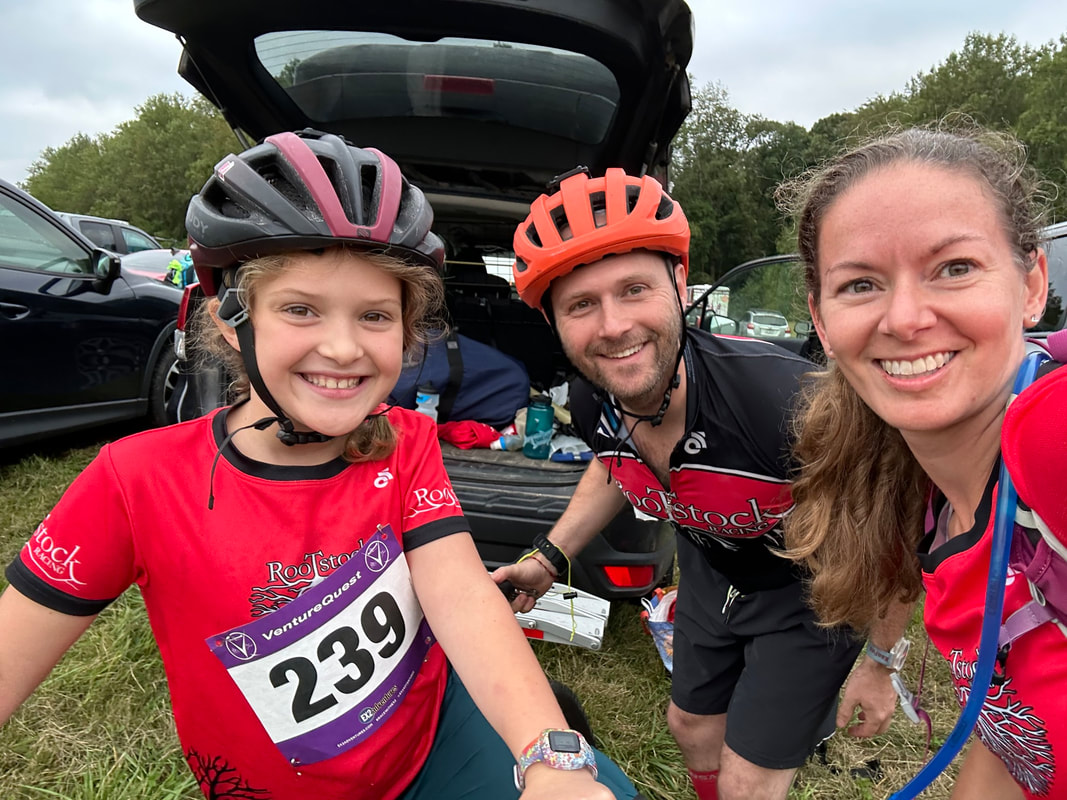
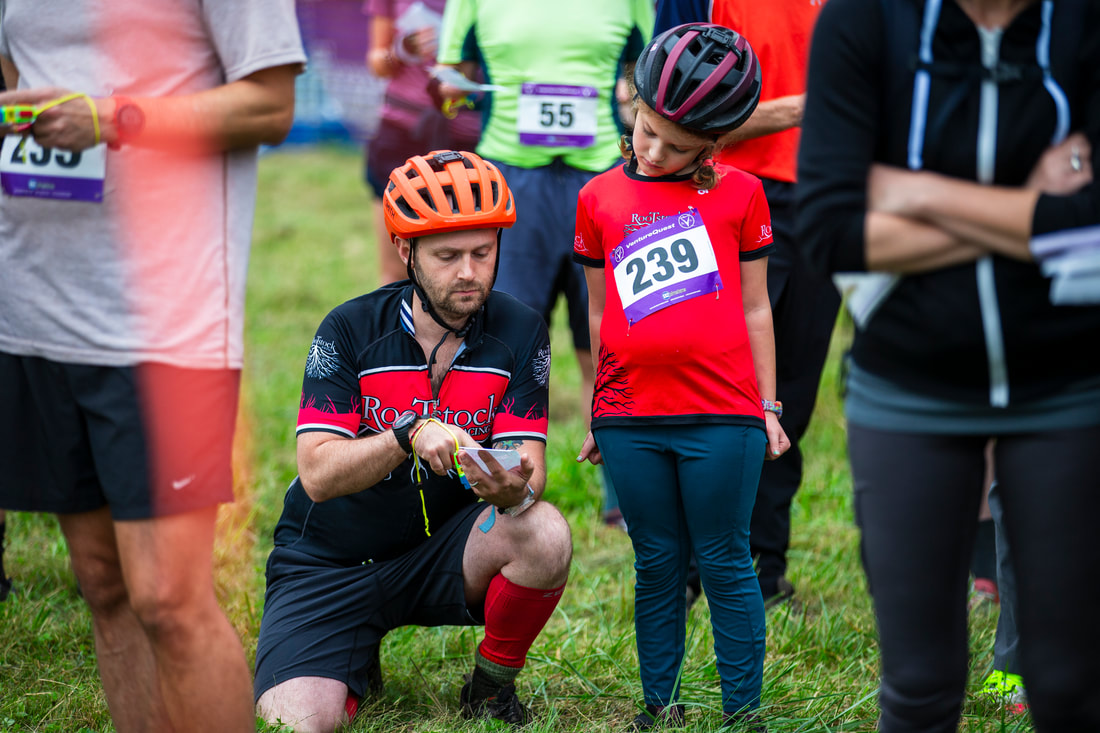
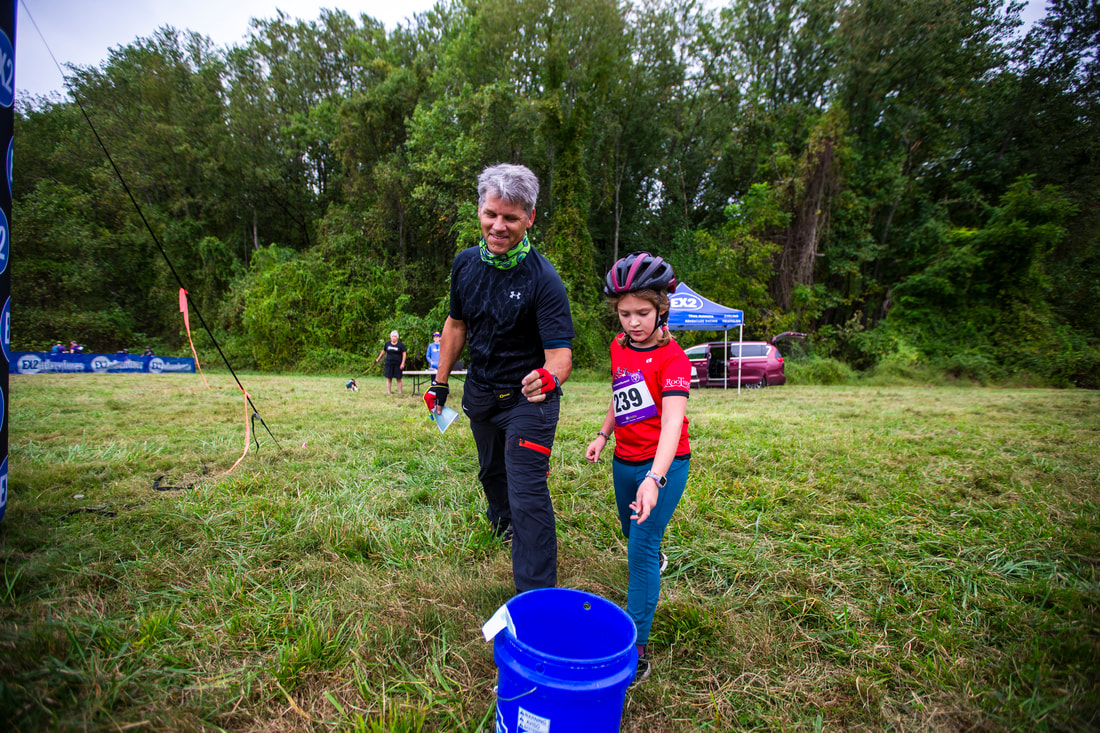
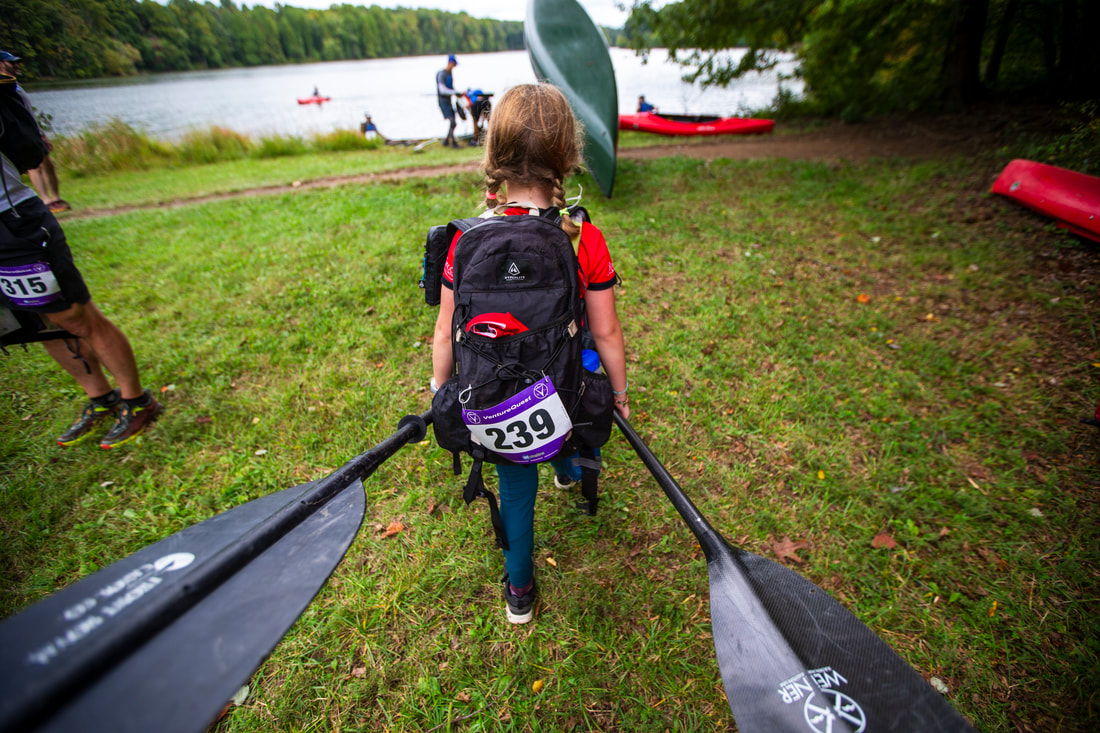
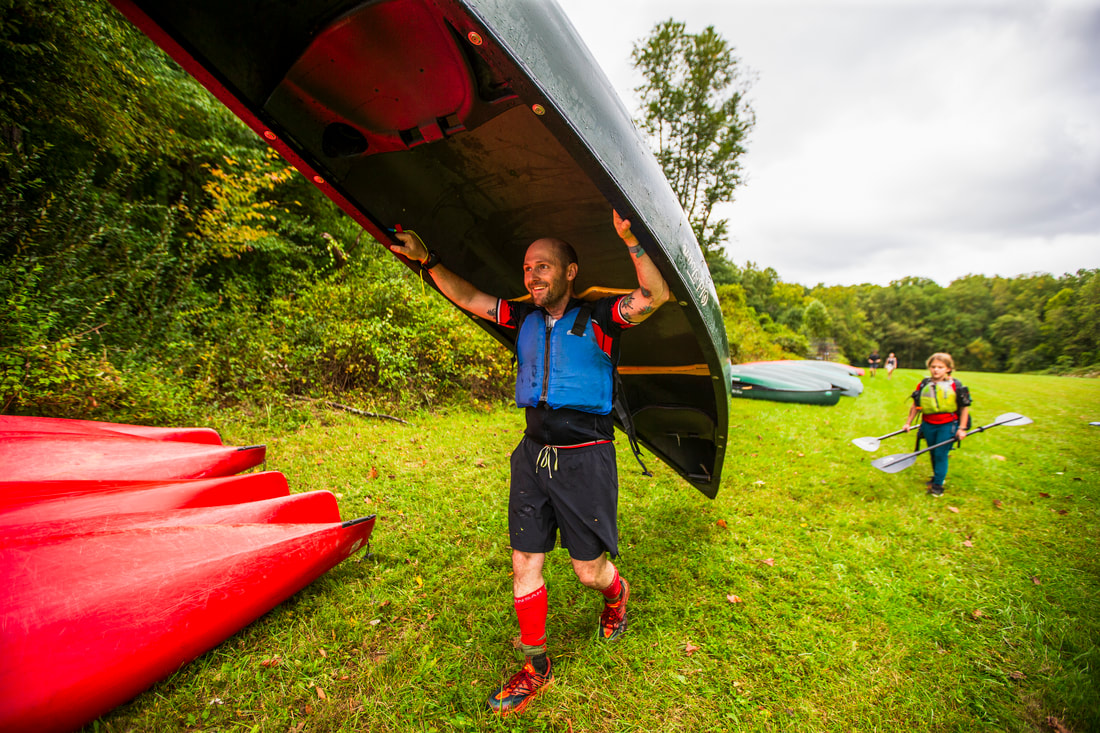
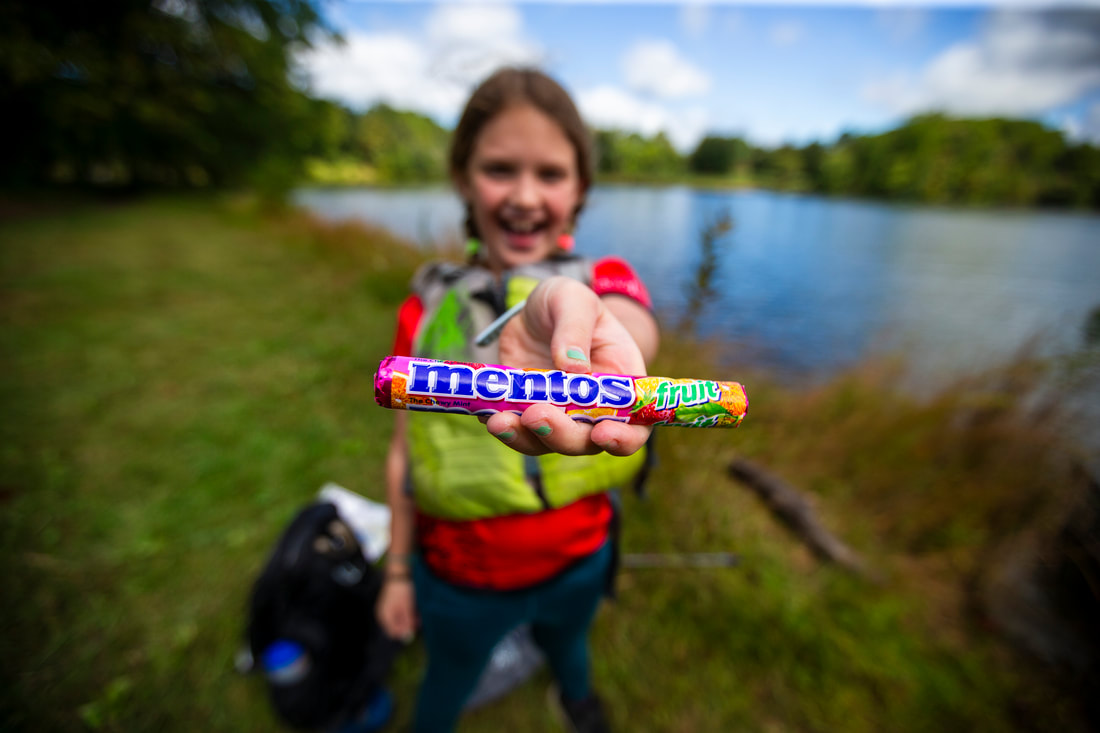
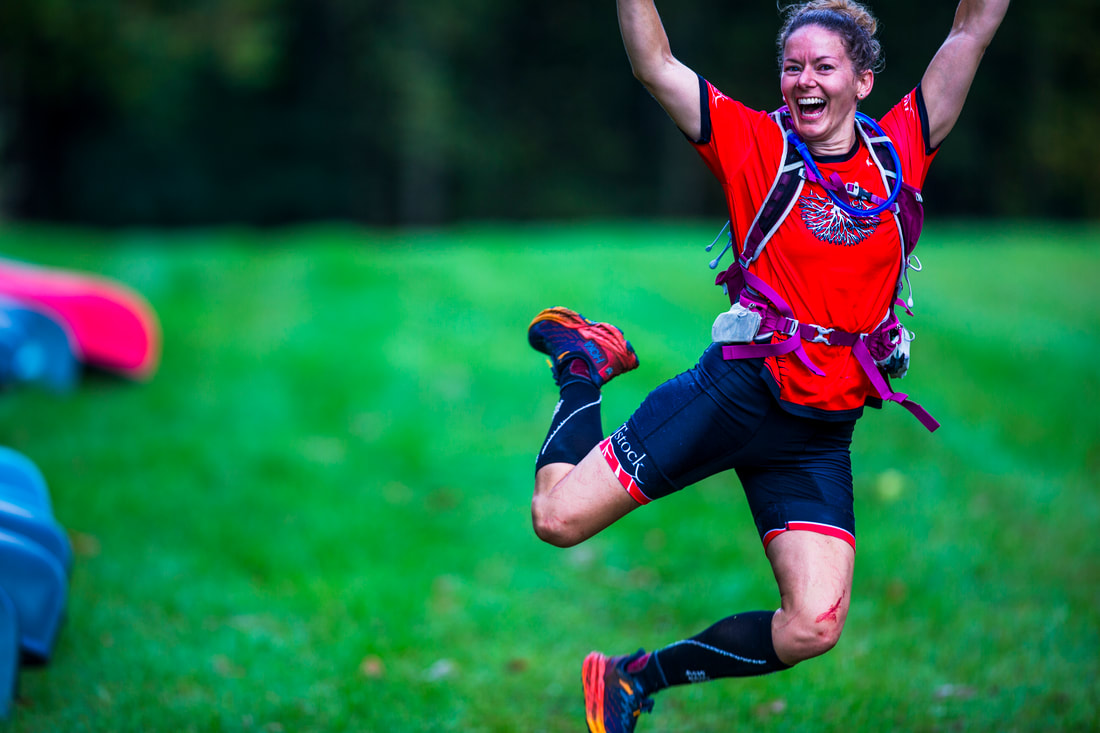
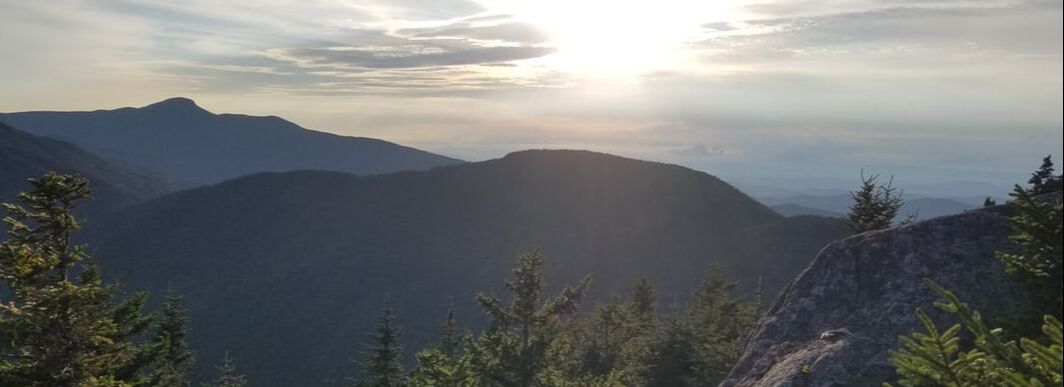
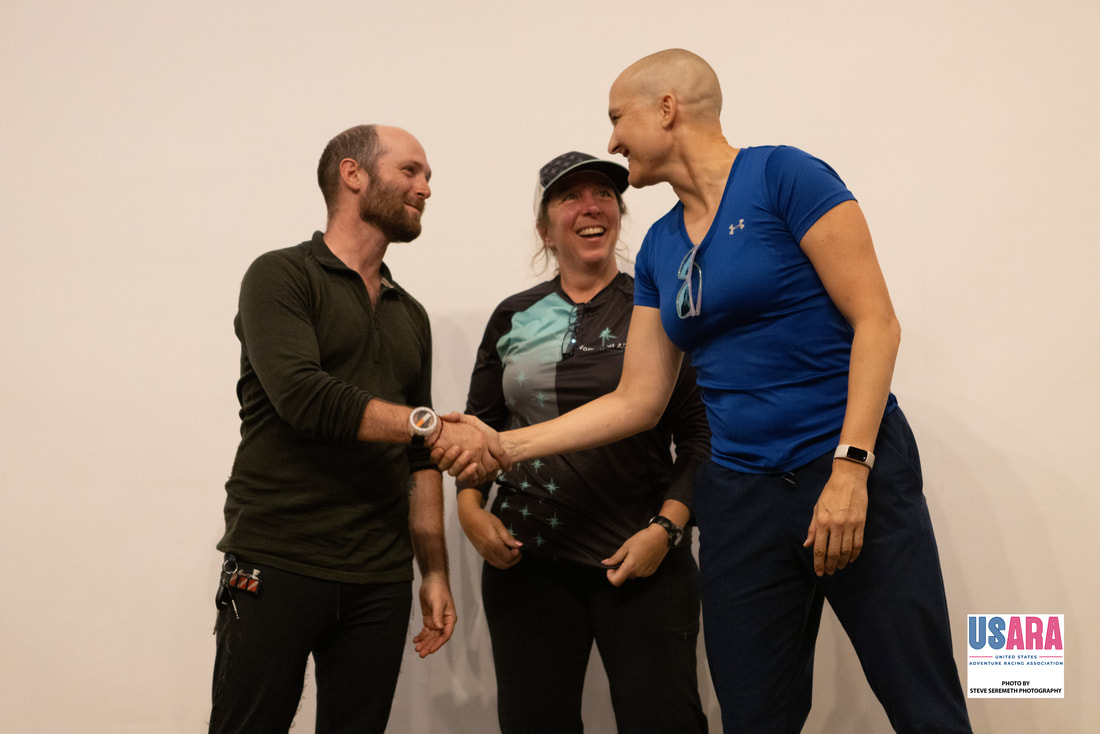
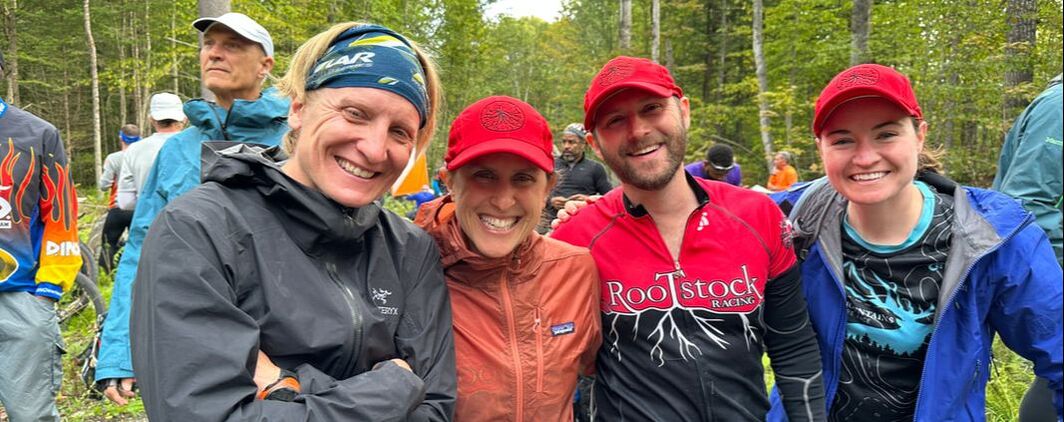
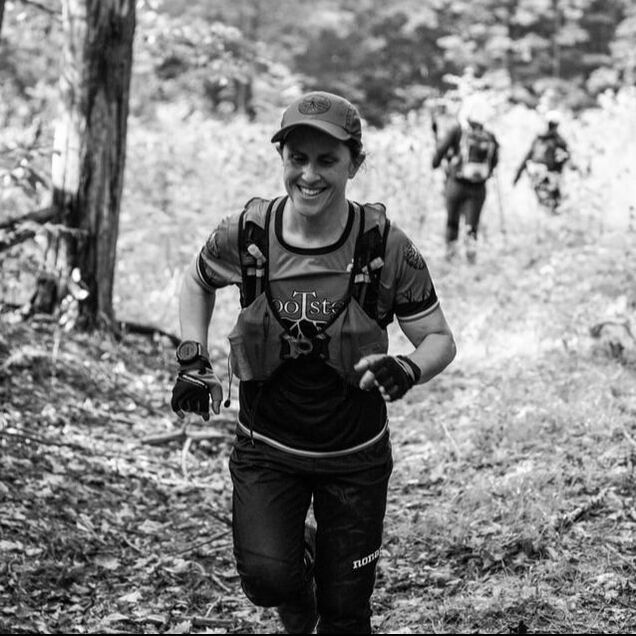
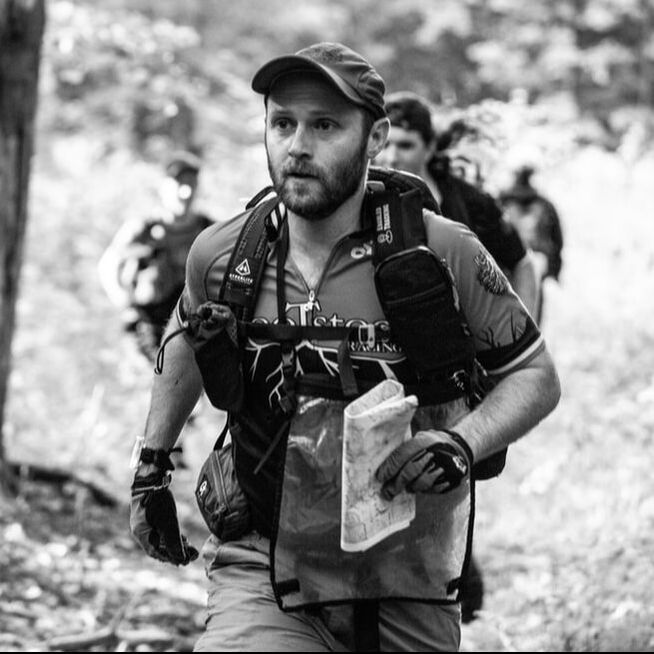
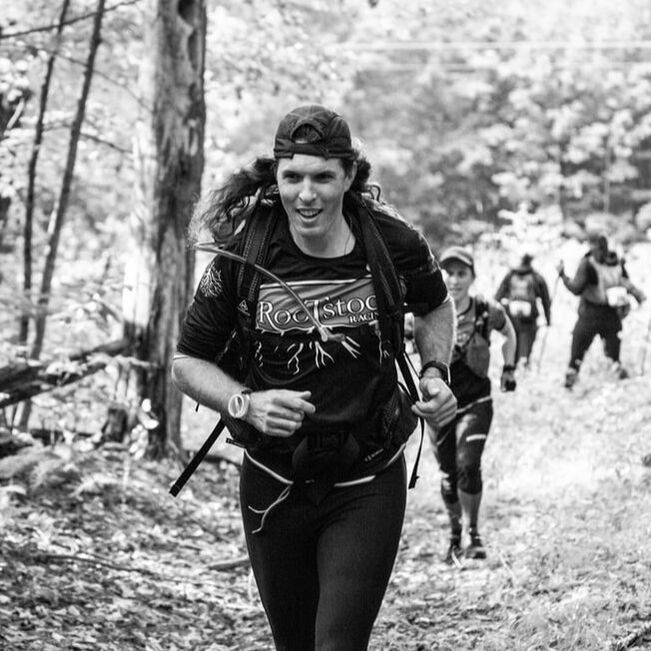
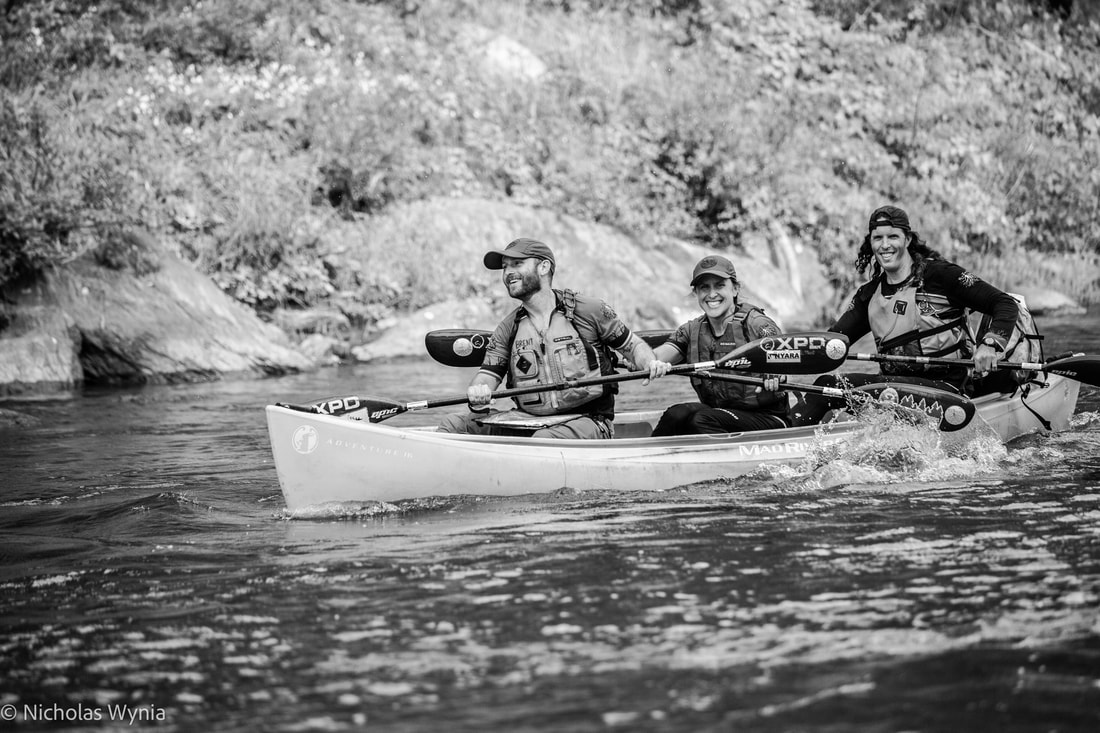
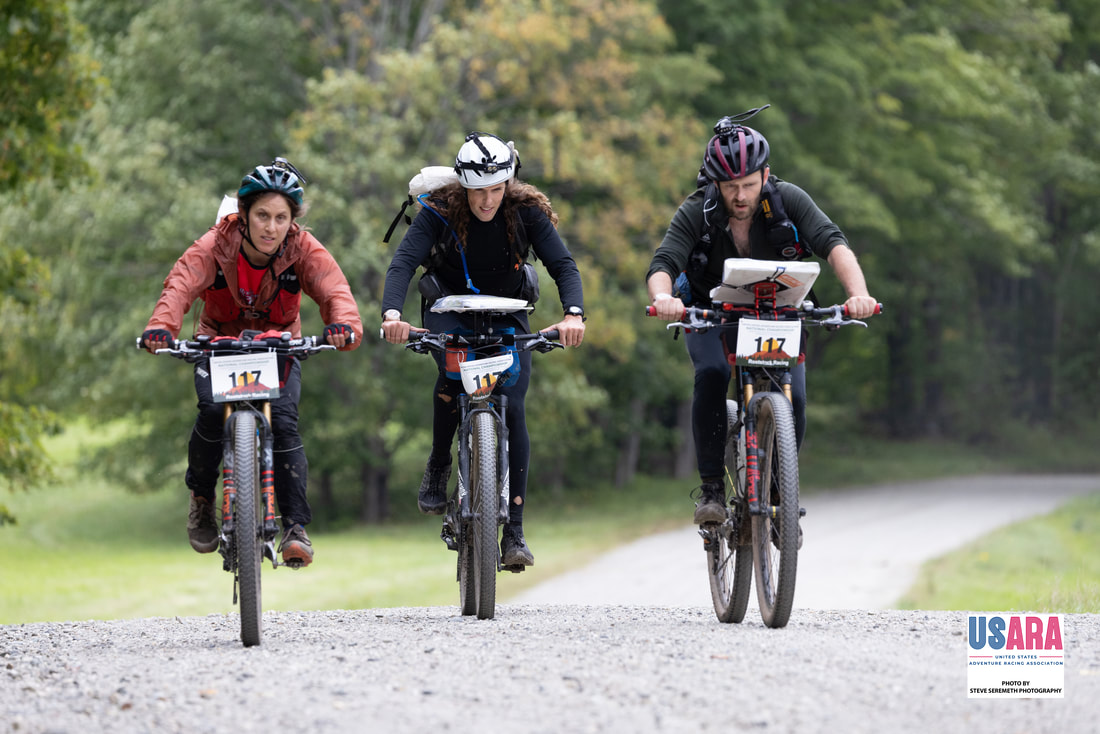
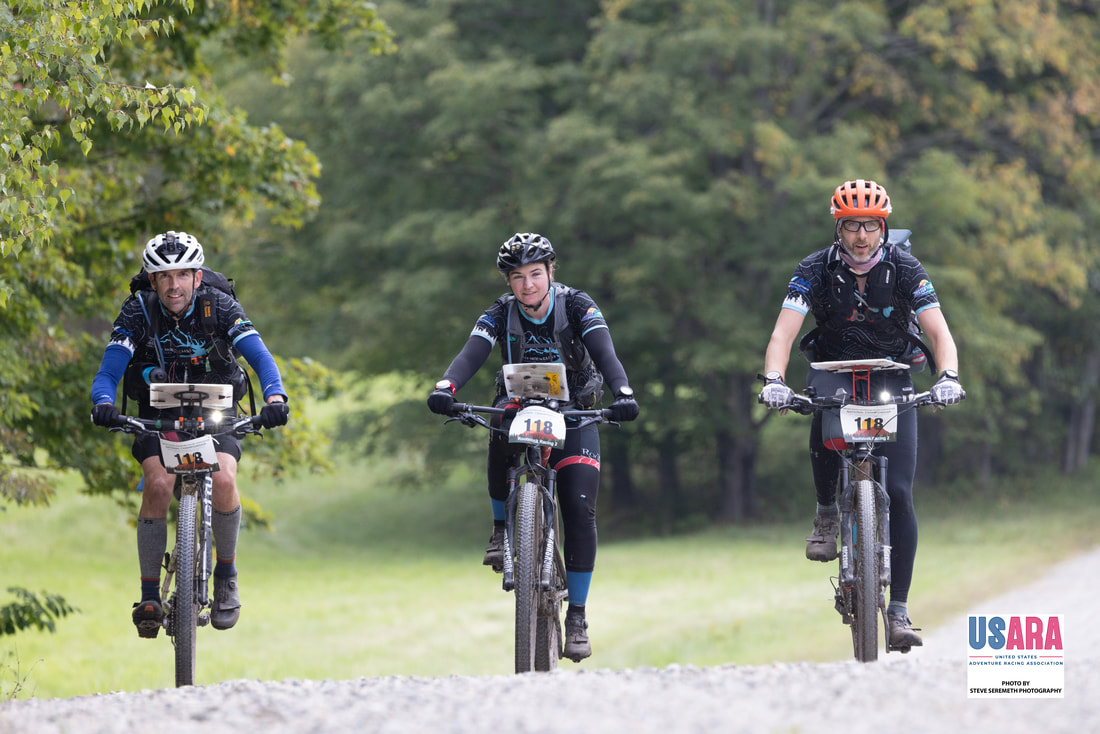
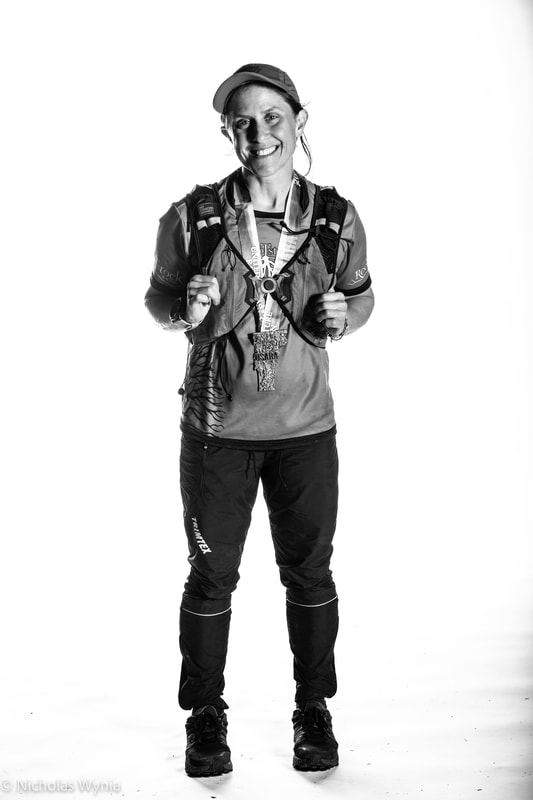
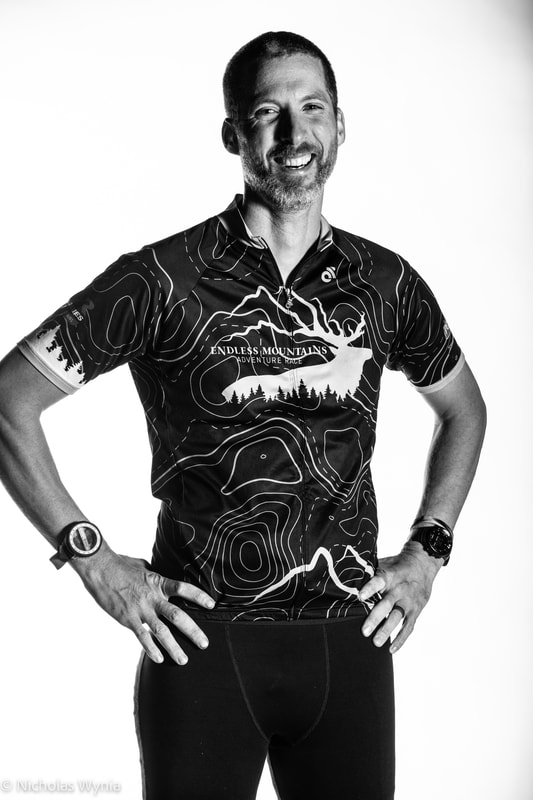
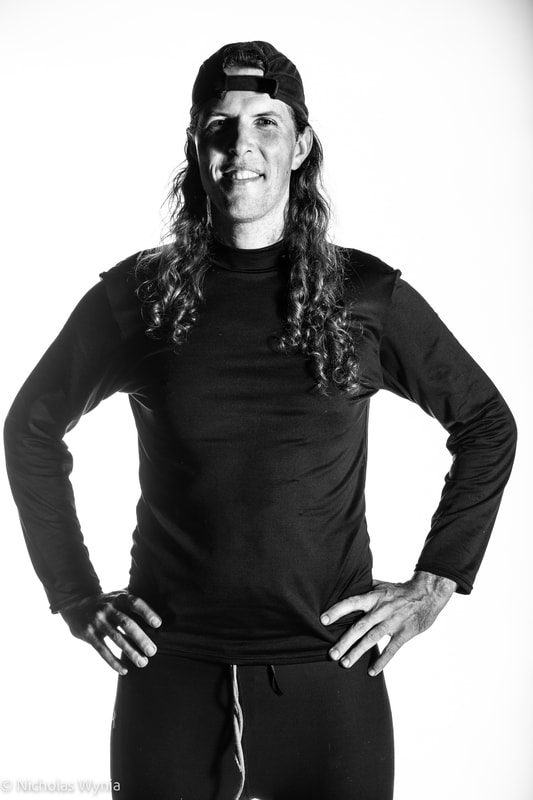
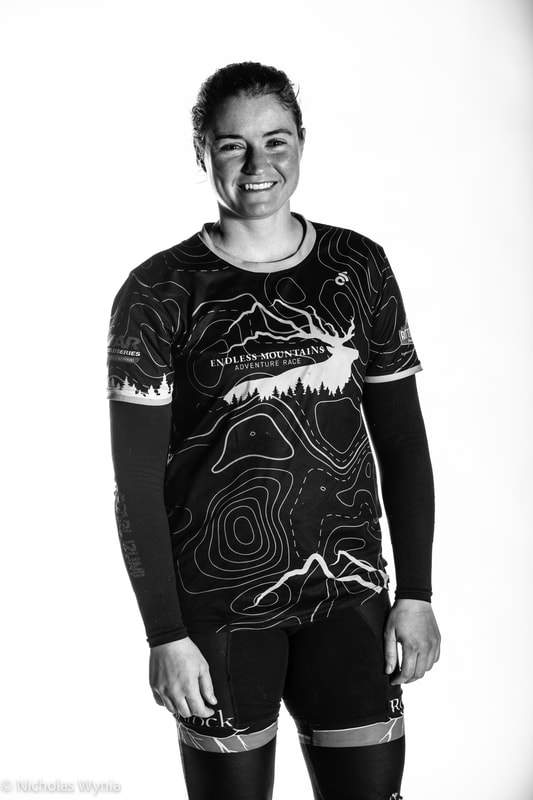
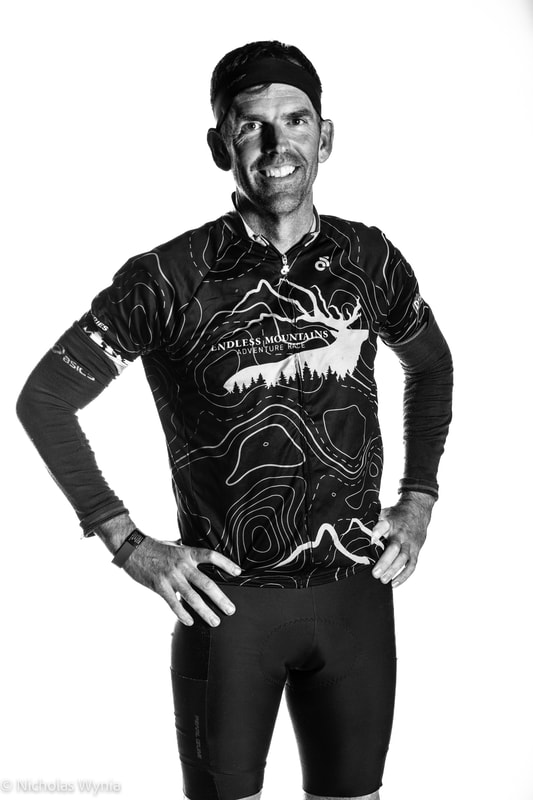
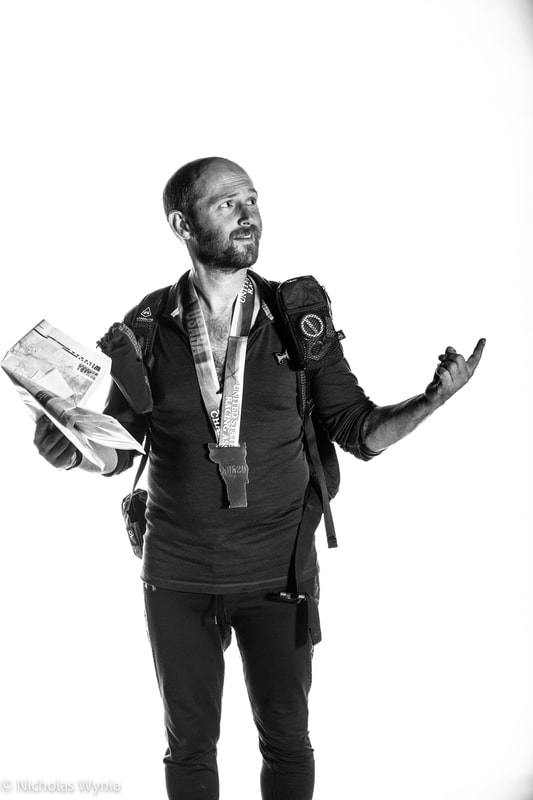
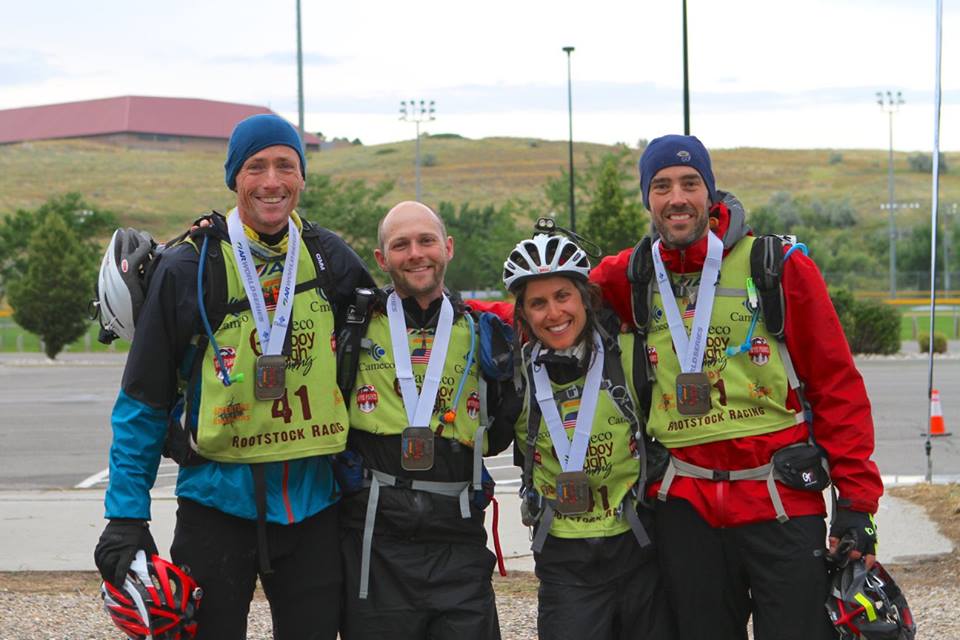
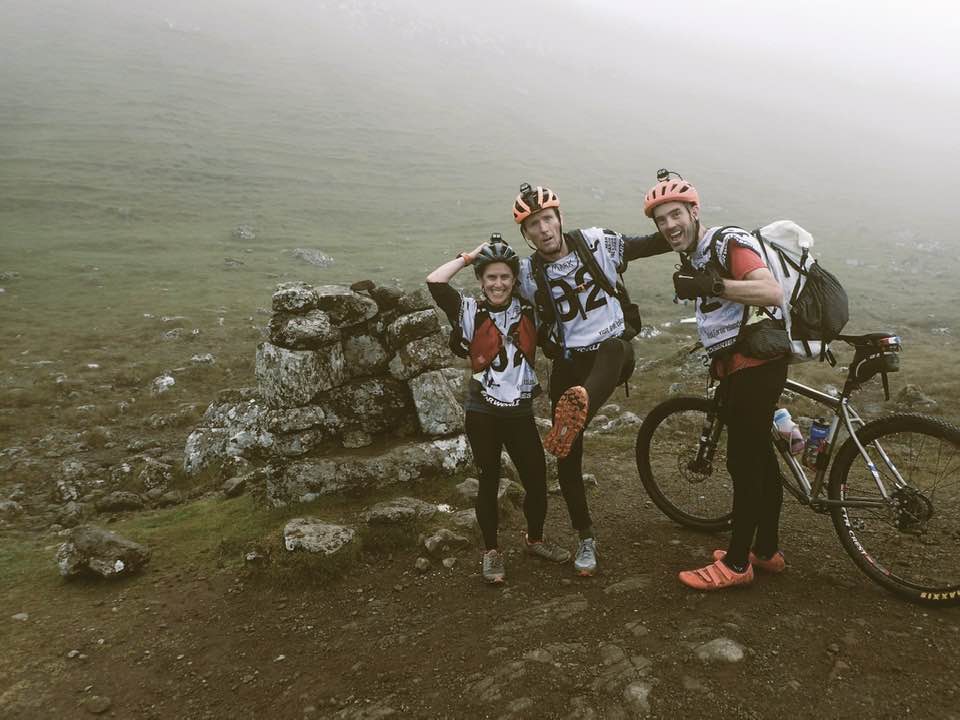
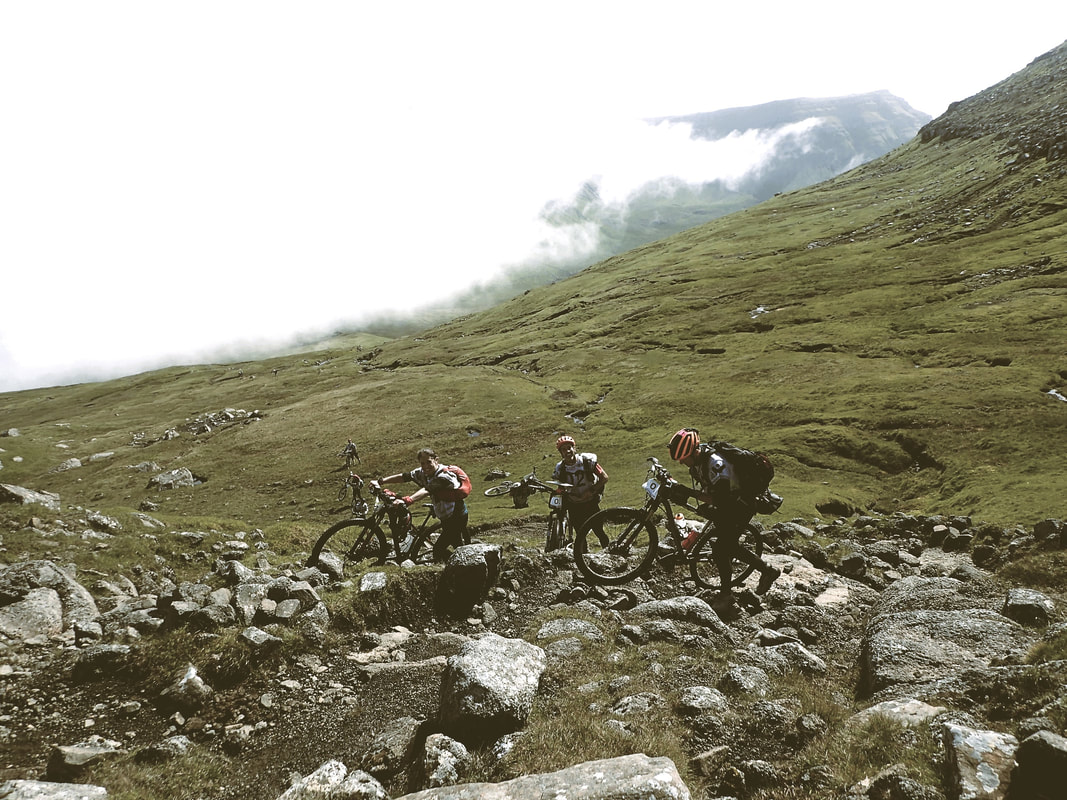
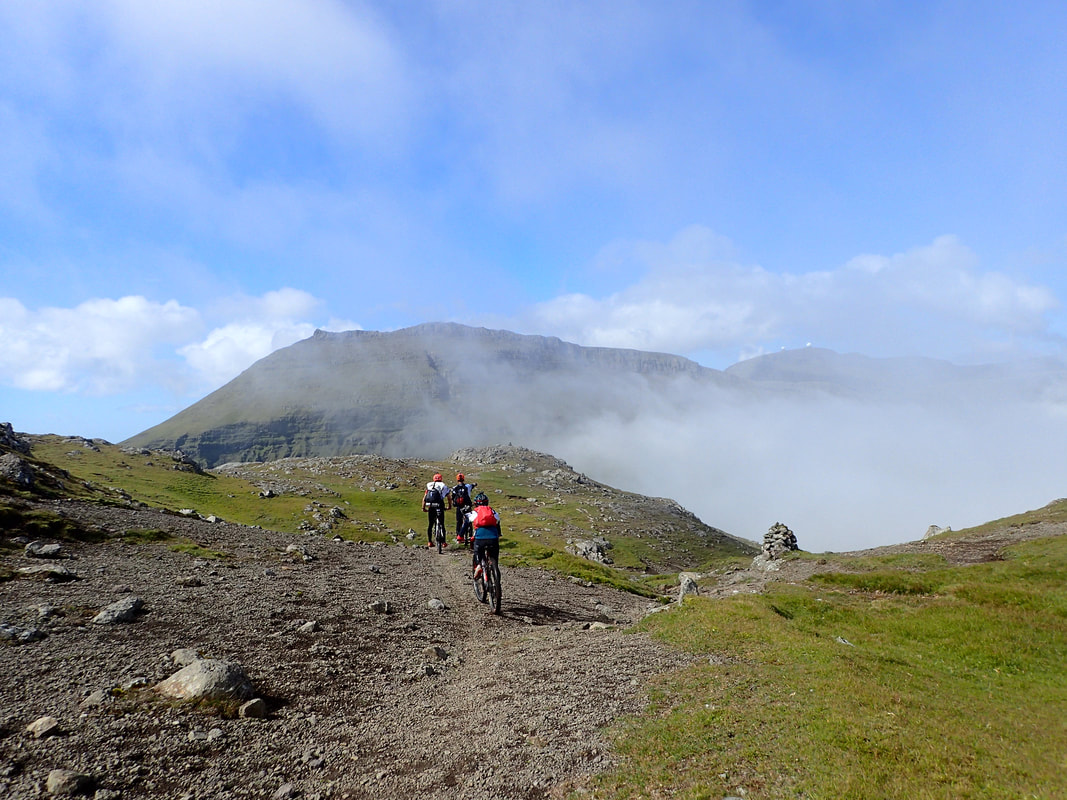
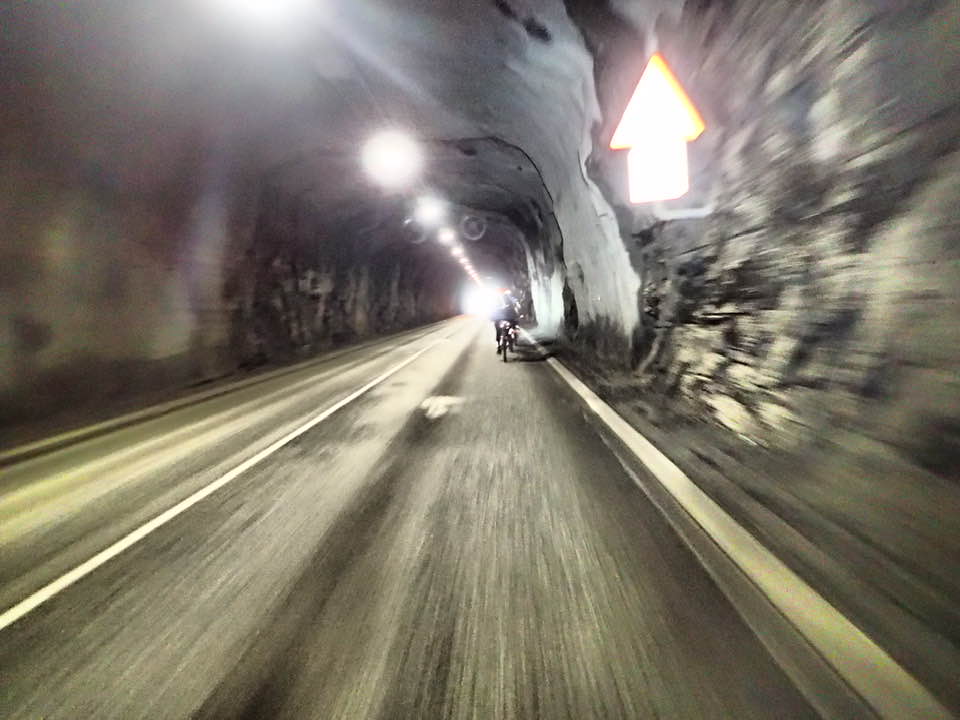
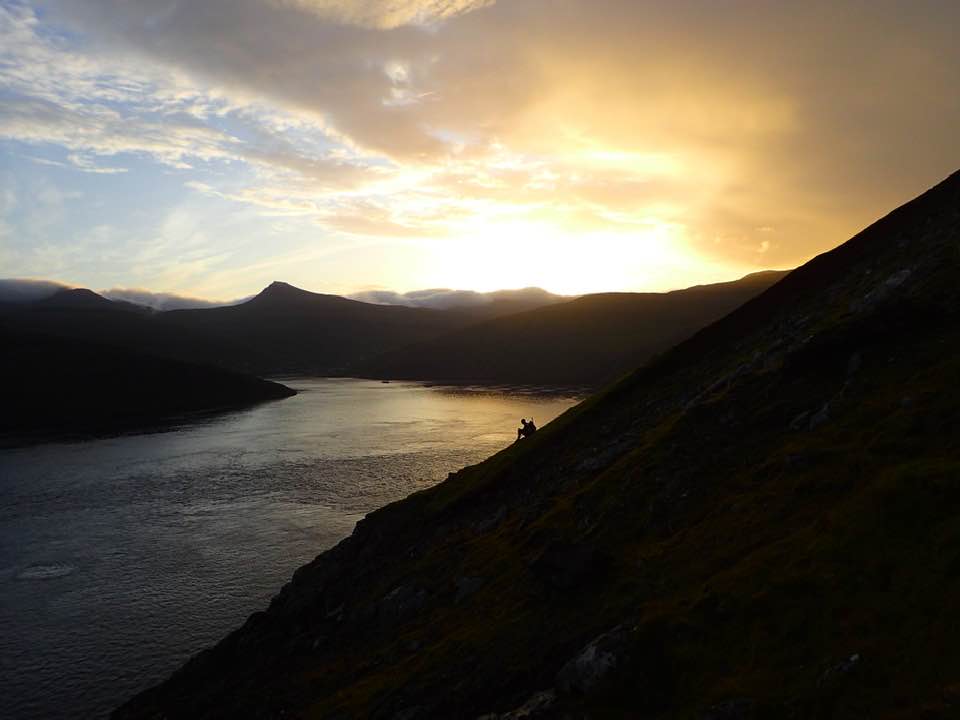
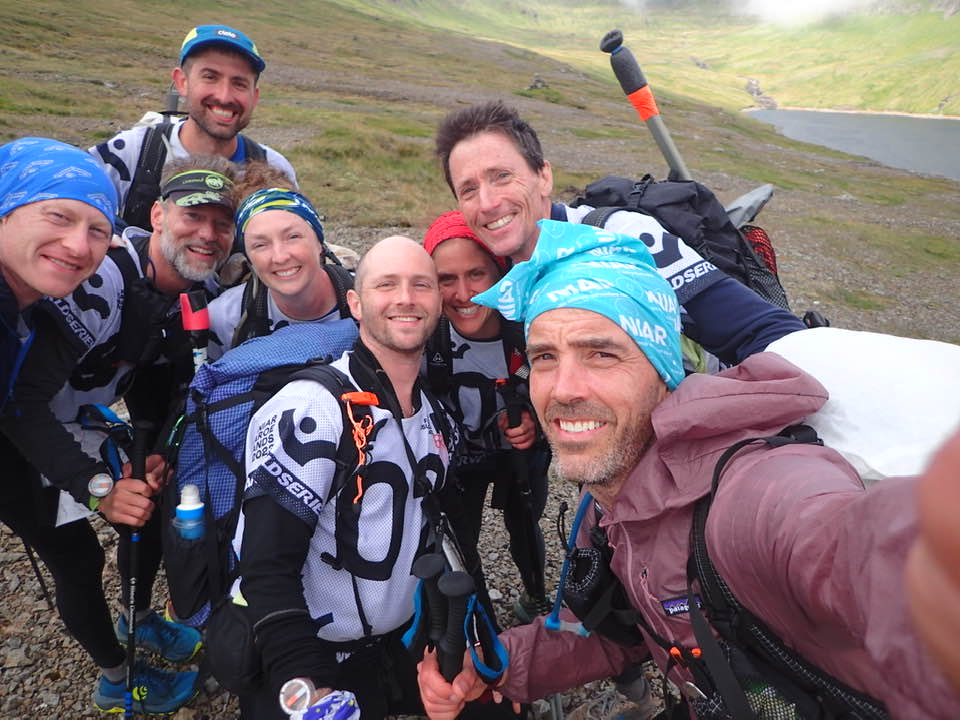
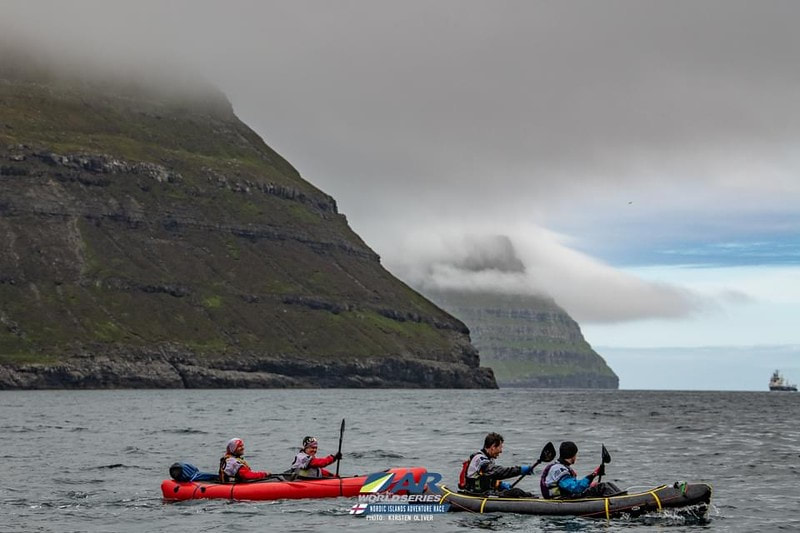
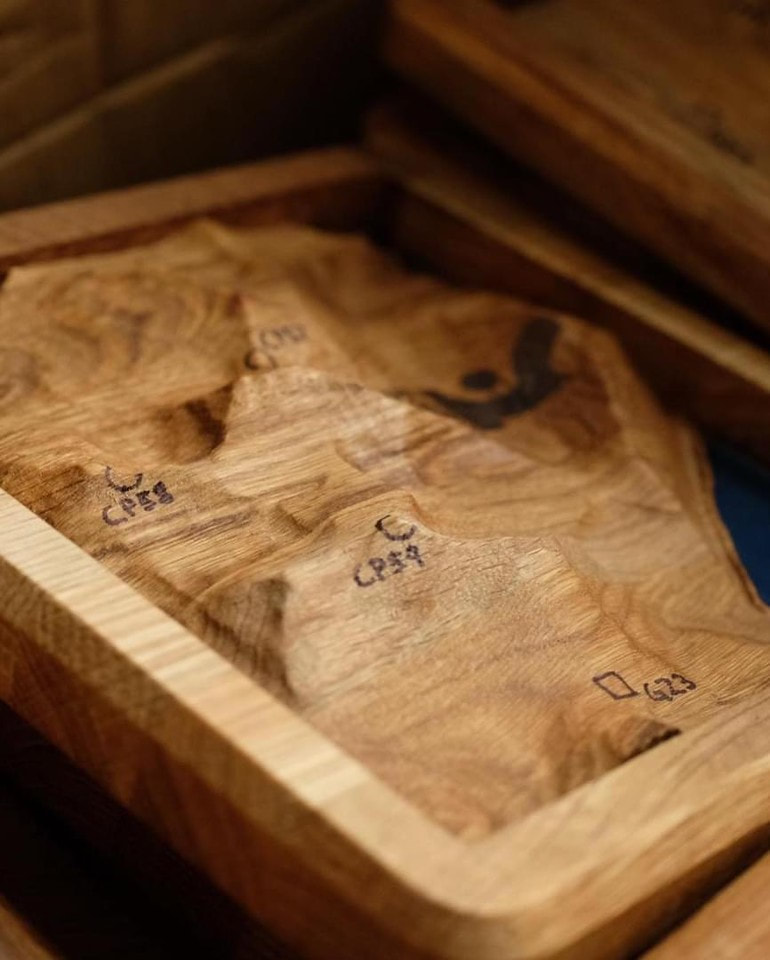
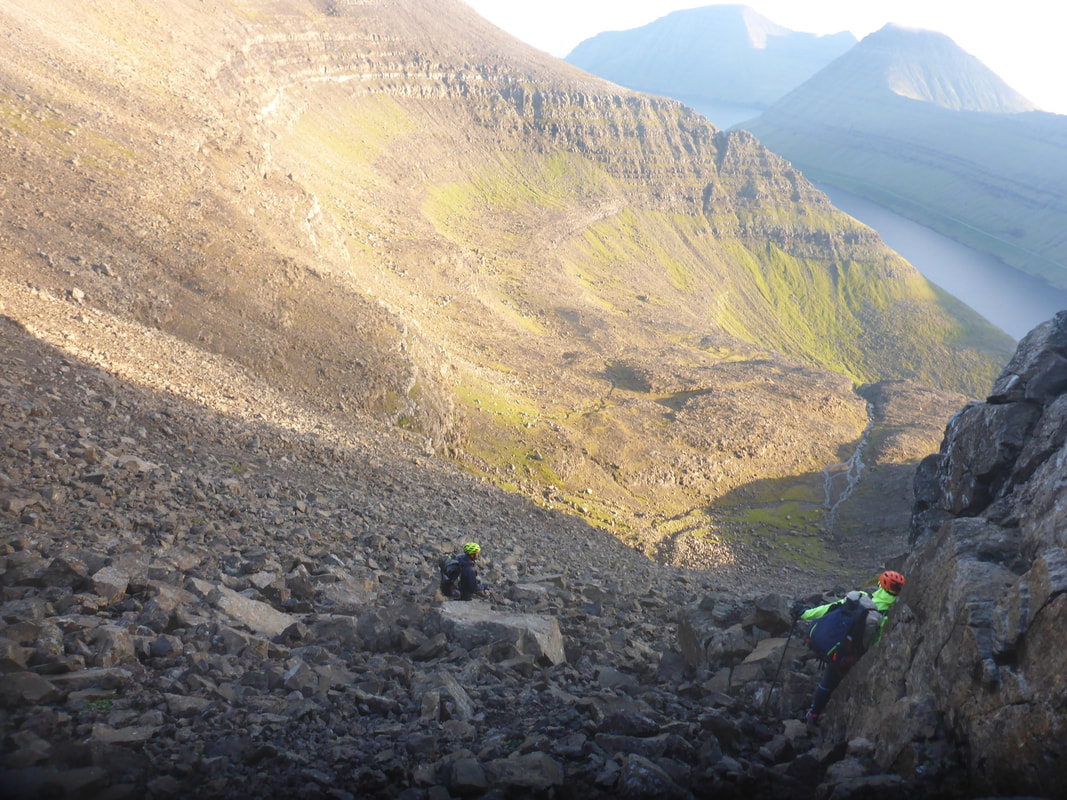
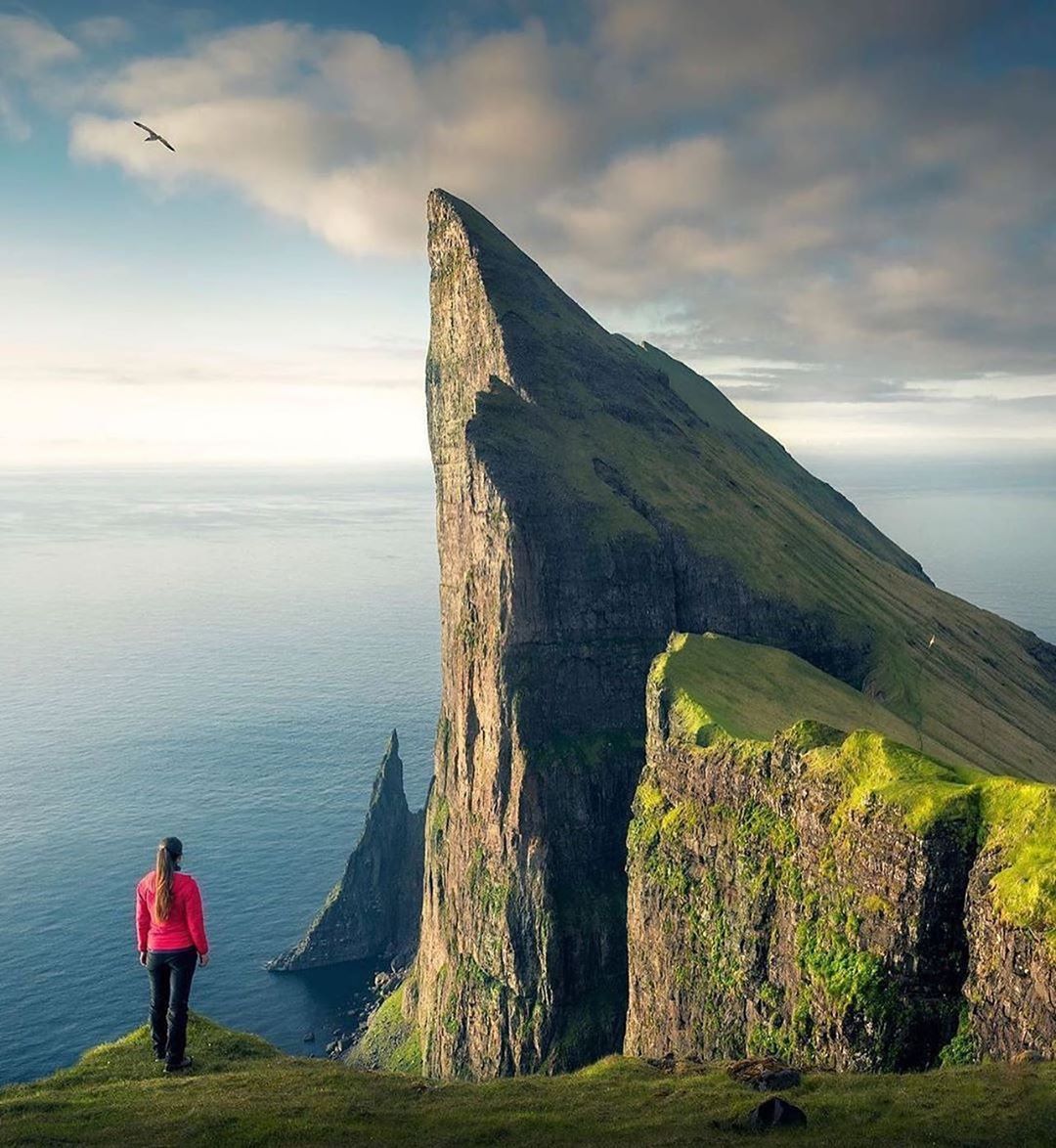
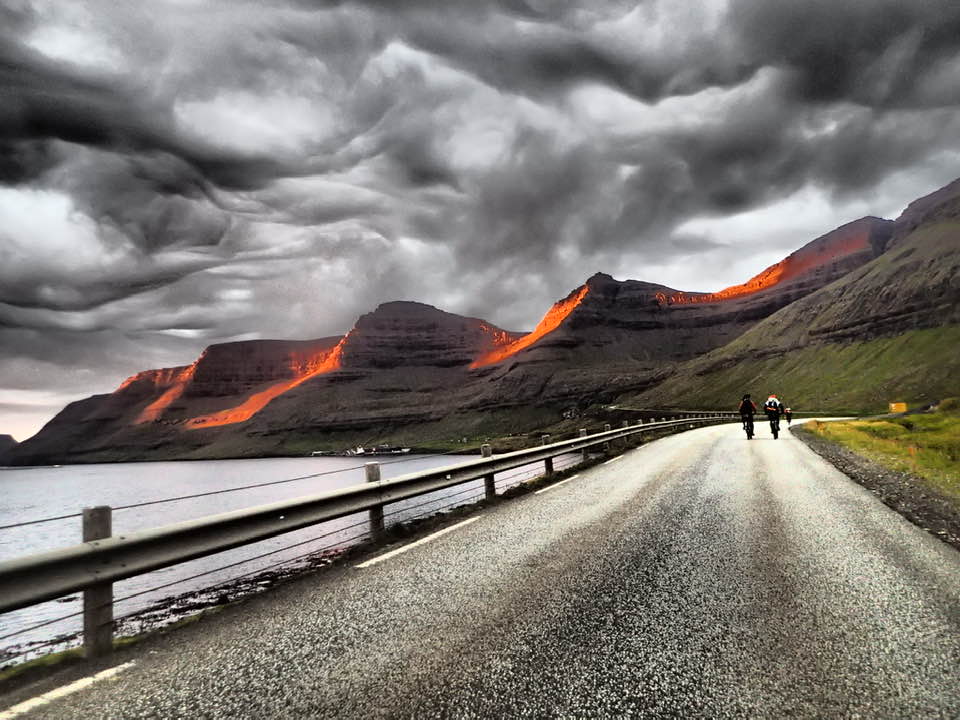
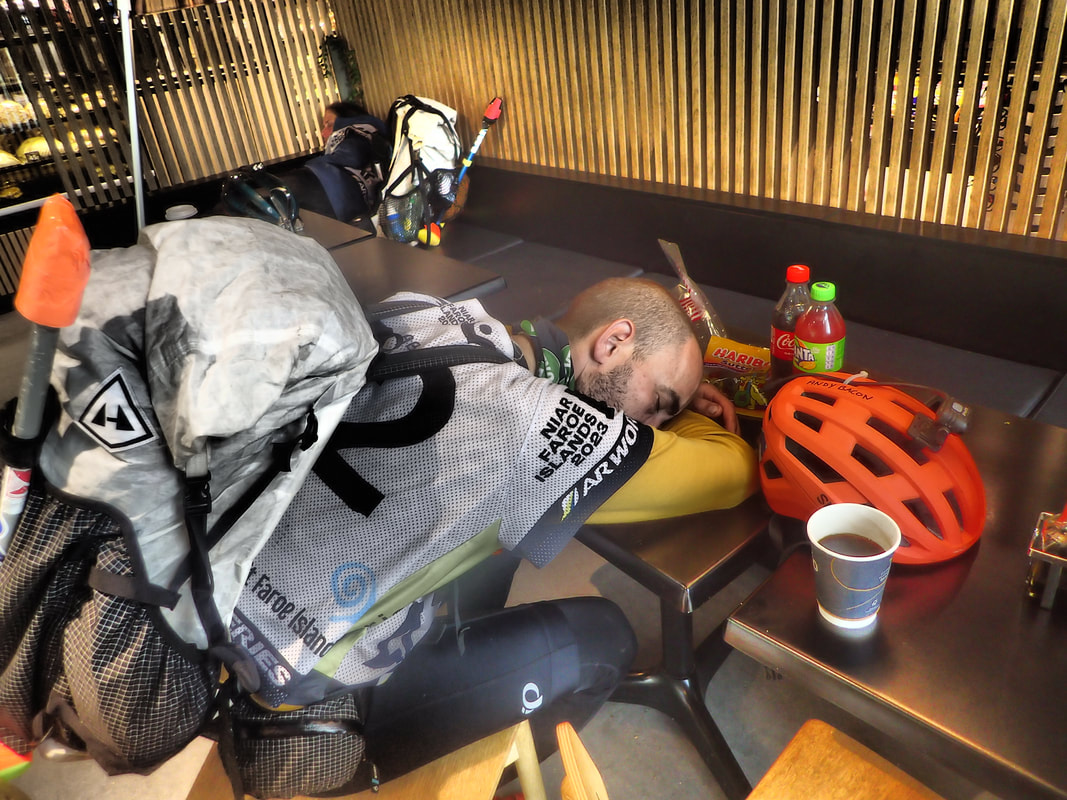
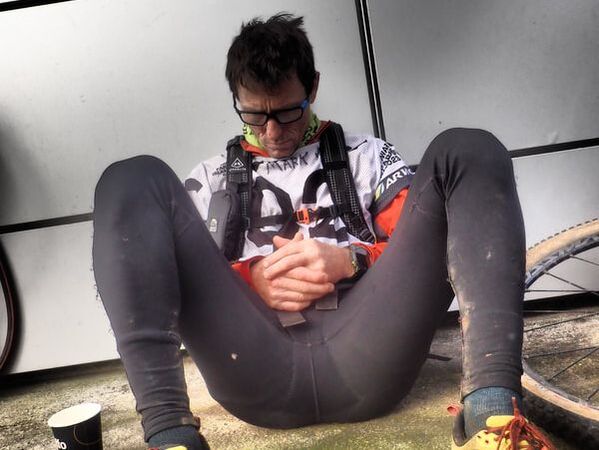
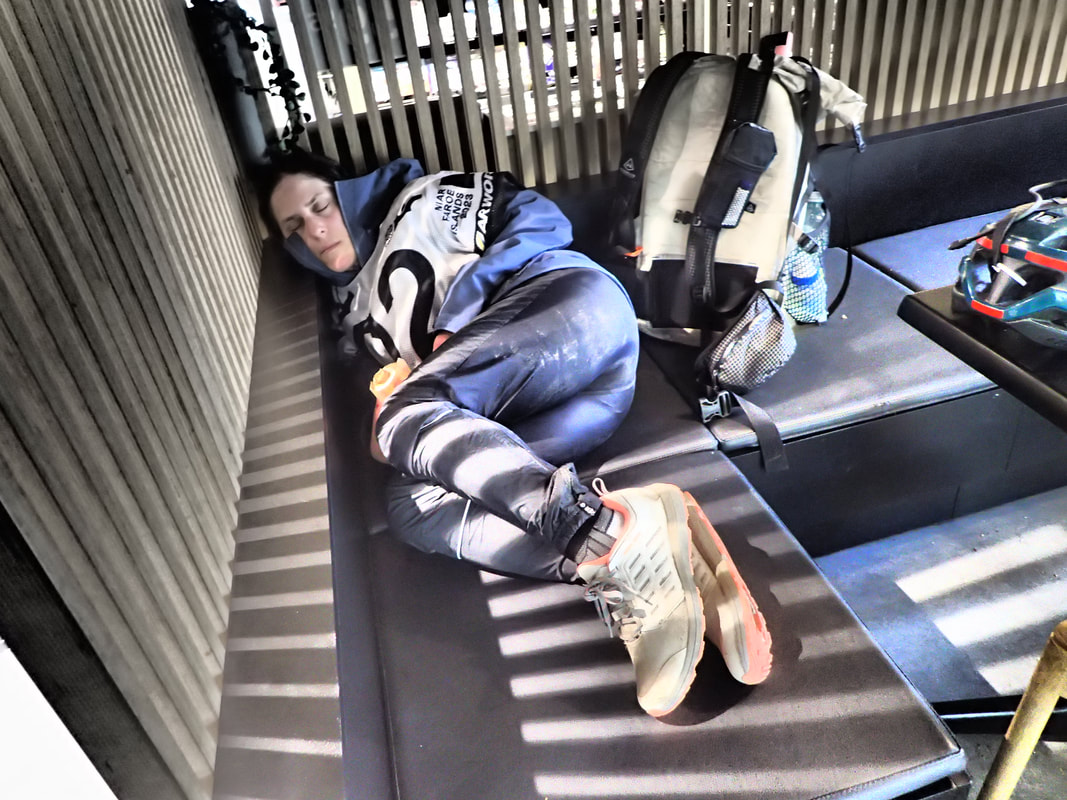
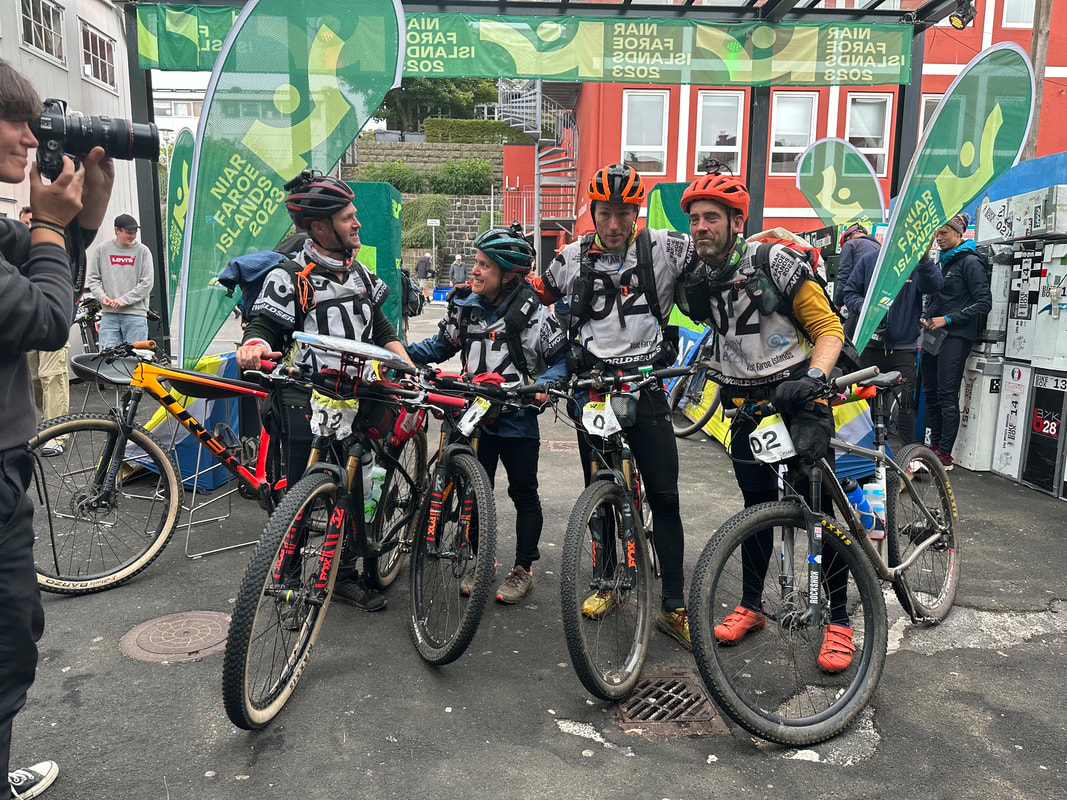
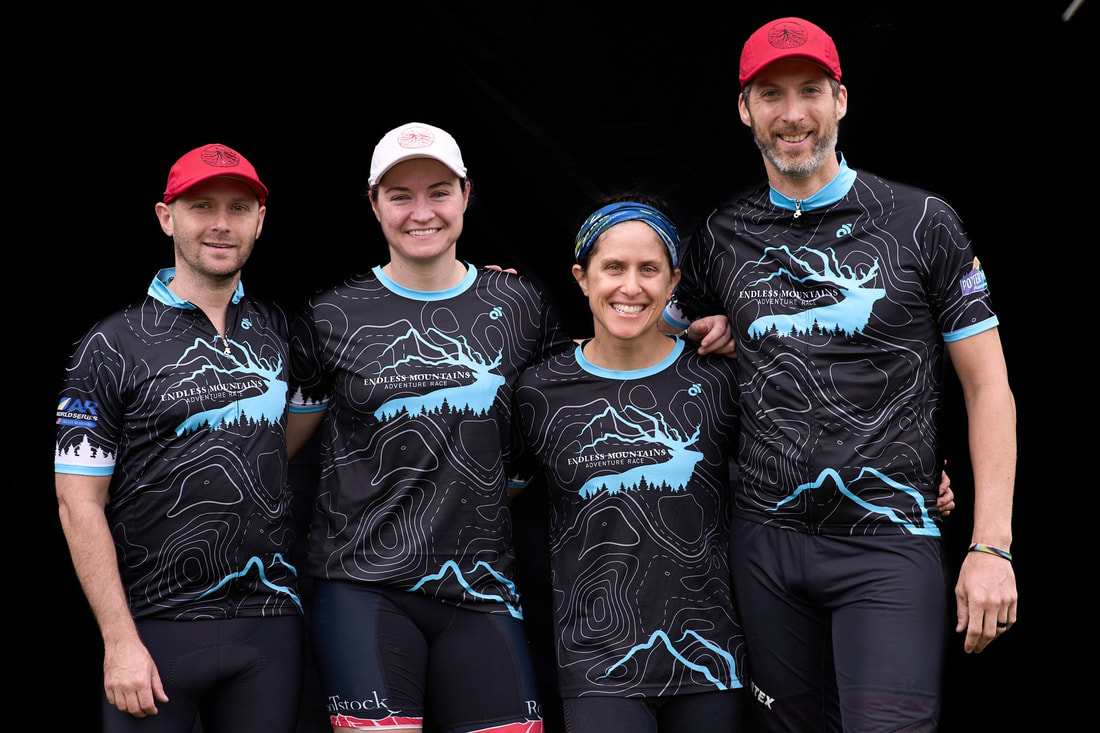
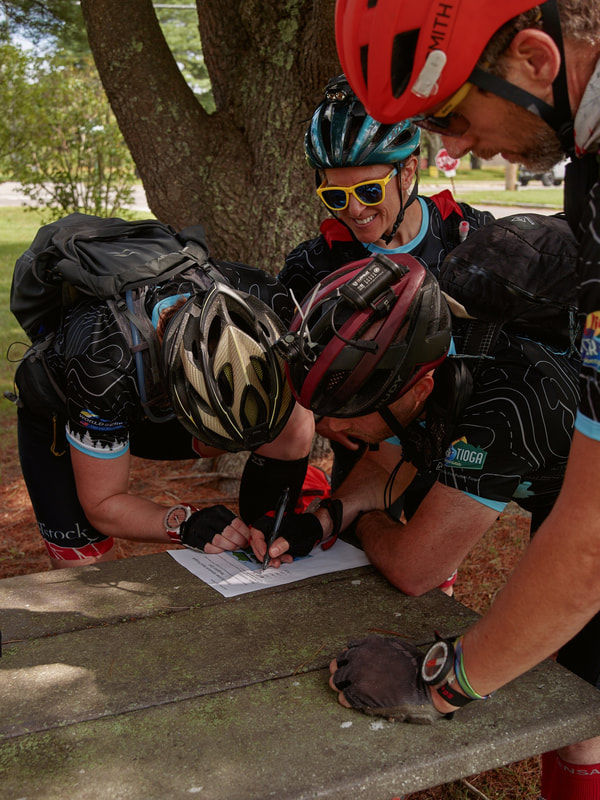
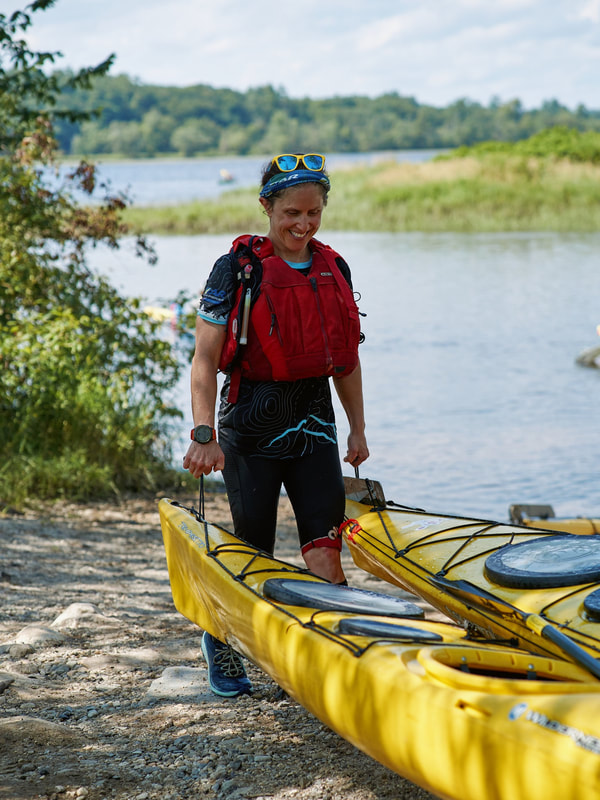
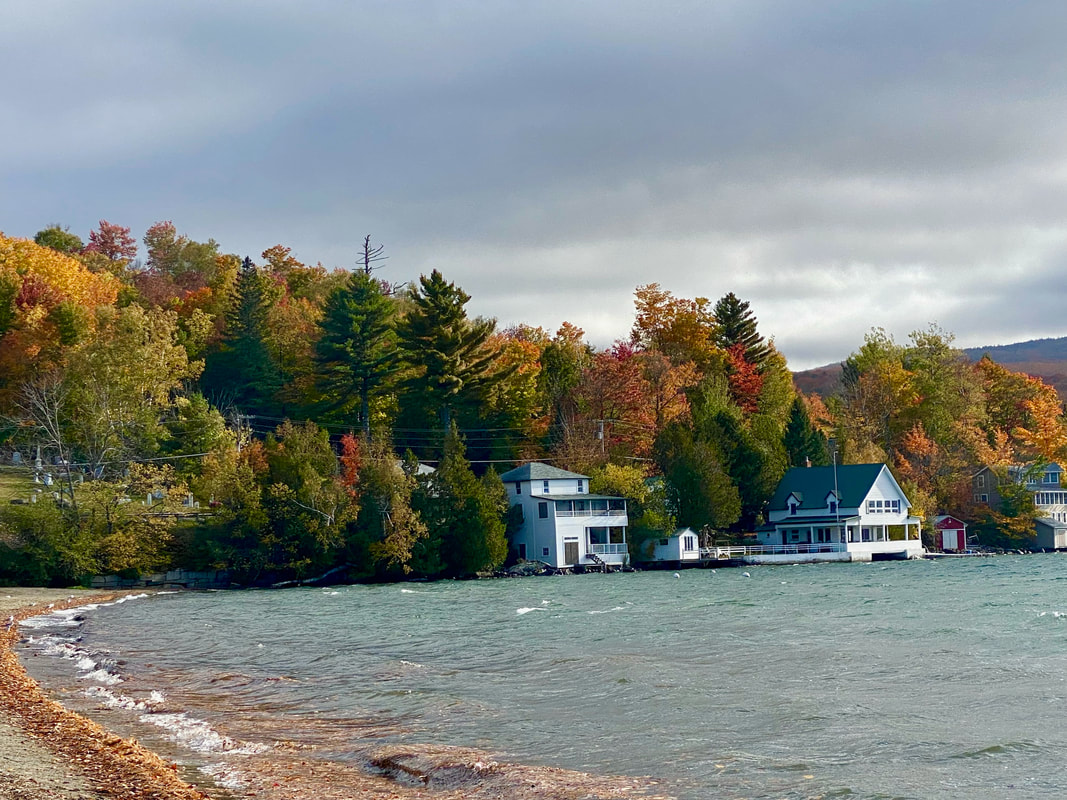
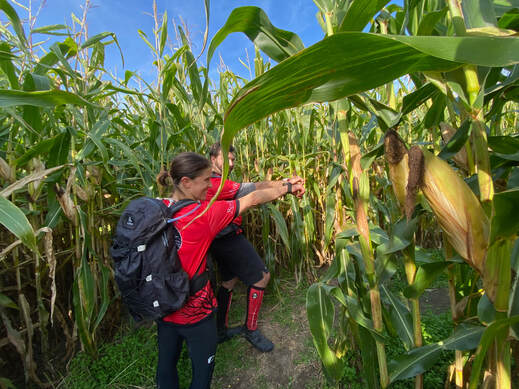
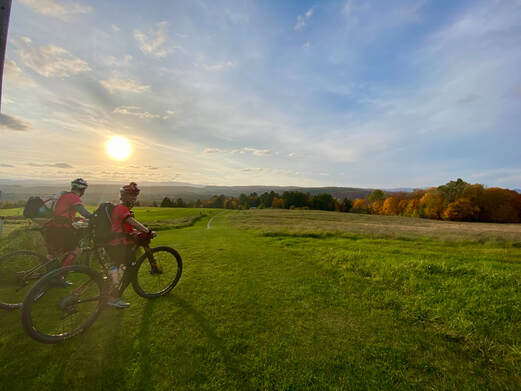
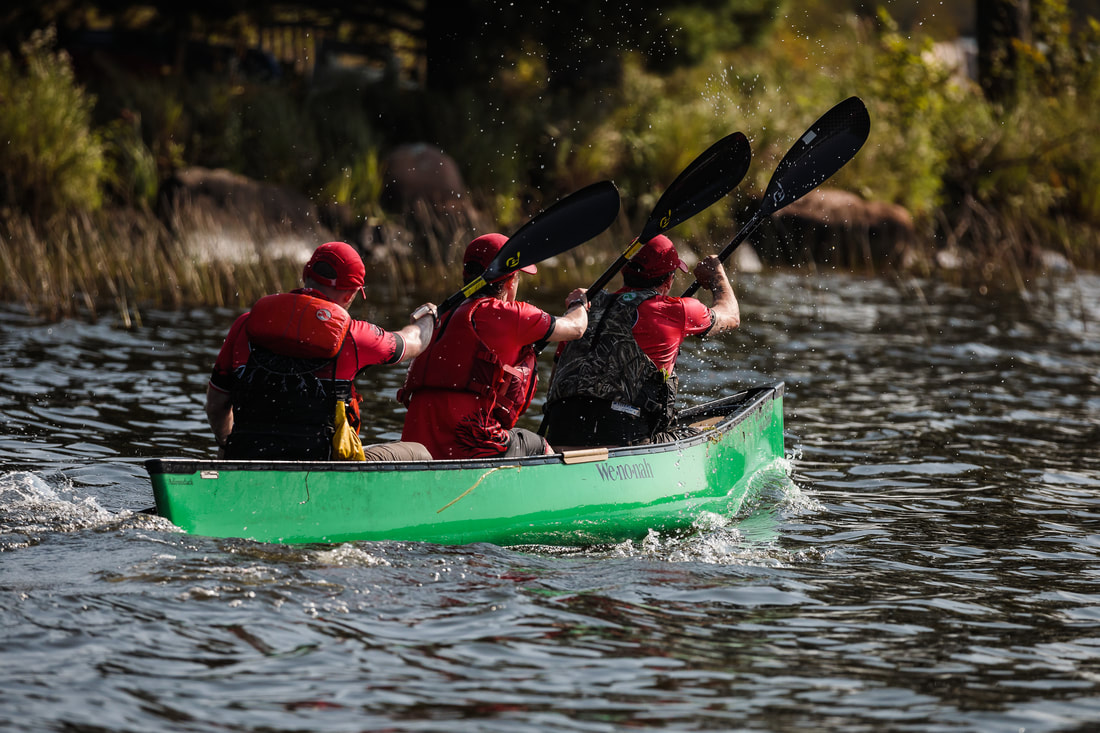
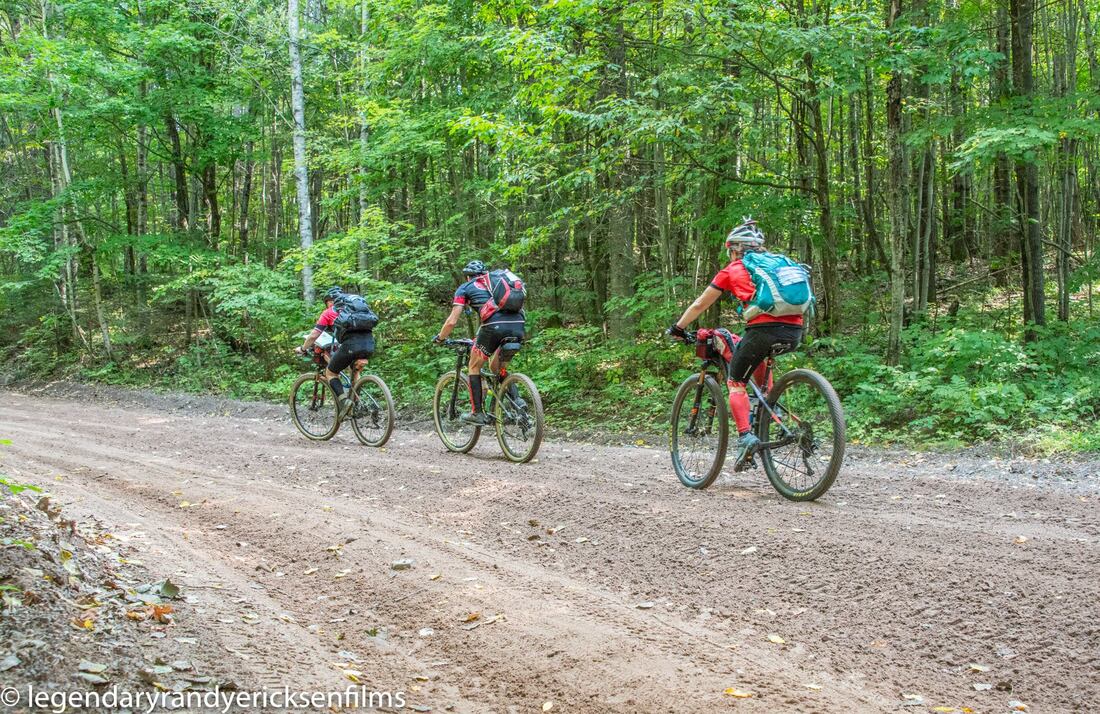
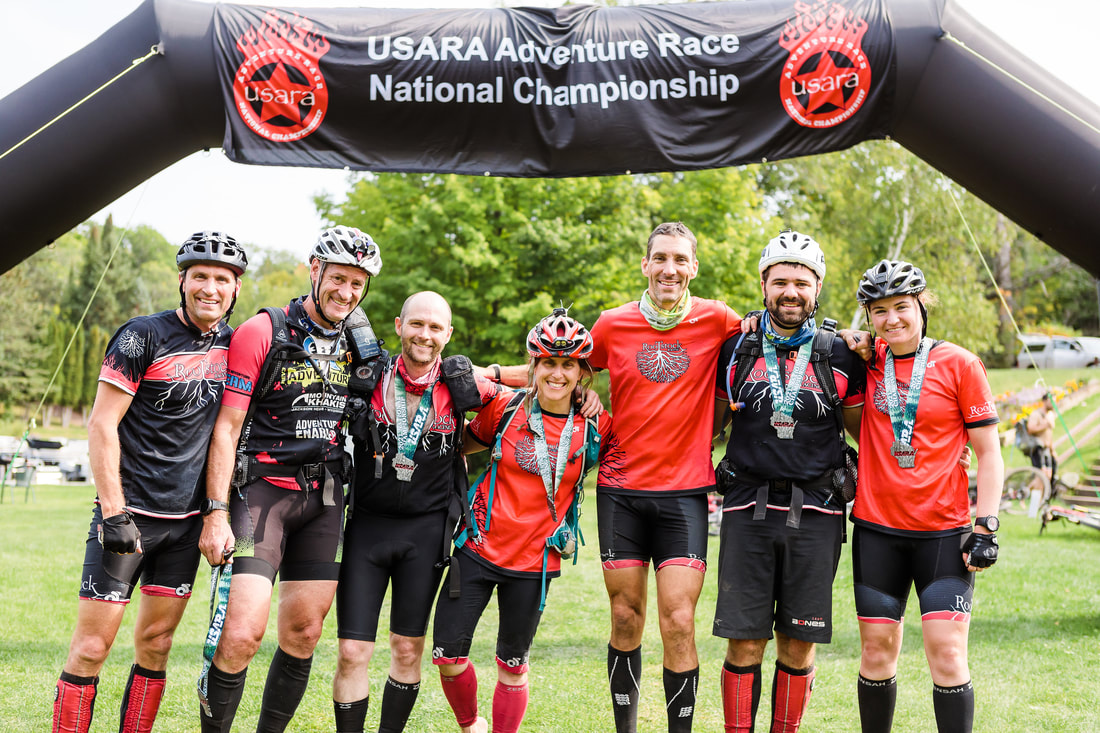
 RSS Feed
RSS Feed
